WAYPOINT NEWS
FUEL THE NEED | The 3rd Annual Mo' Butter Allocation
 The dragstrip was buzzing, a low rumble of engines and a thousand conversations blending into one restless hum. Then the Top Fuel dragster rolled forward, long and lean, painted like fire itself. The driver eased it into the water box, and the world seemed to hold its breath.
The dragstrip was buzzing, a low rumble of engines and a thousand conversations blending into one restless hum. Then the Top Fuel dragster rolled forward, long and lean, painted like fire itself. The driver eased it into the water box, and the world seemed to hold its breath.
With one stab of the throttle, the engine screamed—so loud it rattled ribcages—and the rear slicks lit up. White smoke poured off the tires in rolling clouds, curling skyward like a storm. The car shuddered, danced, and clawed at the pavement, leaving two long black streaks of rubber behind.Fans leapt to their feet, hands clapped over ears, grins splitting their faces. For just a few seconds, the dragster wasn’t racing yet—it was flexing, showing the line who was boss. Then the driver eased off, the smoke drifted away, and the machine crept forward to stage, ready to unleash everything it had.
I’ve always fueled my need for speed. Driving fast wasn’t just a habit—it was who I was. By the time I was 16 and a half, I had already racked up eleven speeding tickets. Lucky for me, my grandfather (a former NASCAR race driver) had friends in the right places. His best buddy was the town’s judge, and instead of handing me a stack of fines, he let me work it off by washing cop cars and wrenching on their 4x4s in our high school auto shop.
The truth is, I caught the racing bug from my uncle Chuckie. A big, stout bull of a man, Uncle Chuck was no joke when it came to hot rods. He taught me how to tear down and rebuild a Chevrolet Performance’s SP350/357 crate engine—a 350 cubic inch (5.7L) Small-Block V8 that pushed out 357 horsepower and 407 lb-ft of torque. That was the moment I realized speed wasn’t just something you felt behind the wheel—it was something you could build with your own two hands. He and I spent many years at many race tracks rebuilding fast cars. Looking back, that hands-on approach is probably what pulled me into winemaking—especially Pinot Noir. Just like those cars, great wine isn’t simply discovered, it’s built piece by piece, with patience, precision, and passion.
When we first envisioned the Croix Estate portfolio, we thought deeply about diversification: not just in style, but in the experience we wanted to deliver to our enthusiasts. Beyond the patience and precision it takes to craft wines at the highest level, we’ve always believed a little fun should be front and center—that spark of whimsy that fuels our need to bring joy to every glass.
Our Autumn allocation builds on the Spring Bread & Butter release, once again focused on guilt-free indulgence at uncompromising quality. This trio of wines showcases the delicious extremes you’ve come to expect from Croix Estate. There is something here for everyone. Pinot lovers, go nuts with one of the most aromatic of our Pinot Noirs. Chardonnay fans, you do not want to miss the 2023 vintage of Petaluma Gap—my goodness, someone give me a bucket of ice, a balmy fall afternoon, a grill, and let the party begin! Finally, the finishing touch is our GSM red blend. I like to call this the “Cabernet” of our Burgundy-inspired house. It’s big, bold, balanced, and a perfect match with hearty autumn fare. Get in here, this is awesome stuff!
Acquire Your Allocation Here
2023 West Pyramid Pinot Noir | Bucher Estate Vineyard, Middle Reach, Russian River Valley
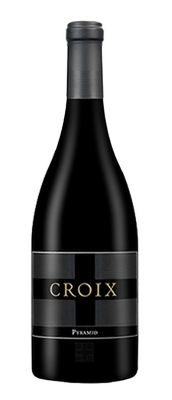 Variety: 100% Pinot Noir, Pommard Clone | Method | 80% Pellenc Destemmed, 20% Wholecluster, 5 Day Cold Soak, 100% Carbonic Native Inoculation Open Top Fermentation, Hand Punch Down Cap Submersion, Free-Run Transfer Via Gravity Flow| Aging Regimen, 50% New French Oak, 16 Months | Clarifying Via Barrel To Tank
Variety: 100% Pinot Noir, Pommard Clone | Method | 80% Pellenc Destemmed, 20% Wholecluster, 5 Day Cold Soak, 100% Carbonic Native Inoculation Open Top Fermentation, Hand Punch Down Cap Submersion, Free-Run Transfer Via Gravity Flow| Aging Regimen, 50% New French Oak, 16 Months | Clarifying Via Barrel To Tank
Just when we thought this wine could not get any better, along comes the 2023 vintage. This wine is sexy, fragrant, and inviting opening with candied orange rind, honeysuckle, white pepper, strawberry cream, all spice, sweet tobacco, cherry cola, and herbal tea. The anticipation for what comes next is captivating. The glide is substantial upon entry to finish with blue herbs, fig jam, pear, candied red fruit, and a touch of toasted oak. The finish is silky, peppery, and bright with the perfect balance of ripe fruit and acid harmony. Consumable upon release, yet this wine has the backbone to go the distance for another eight years if so desired.
Joe and Annemarie immigrated from Luzern, Switzerland in 1950, settling first in San Jose with a dream of owning a dairy farm in Northern California. By 1958 Joe and Annemarie had located a 360-acre dairy for sale just outside the town of Healdsburg. The two invested their life savings on the purchase and began their journey with just 50 head of dairy cows and a few calves. Their son John graduated from UC Davis in 1984 and recognized an opportunity to diversify their land with a high value crop in vitis vinifera, in particular, Pinot Noir and Chardonnay. Convincing his parents of the decision to branch into the winegowing business, the first vineyard blocks of Pinot Noir were planted in 1997. Located adjacent to Buchar Farms on Westside Road, in the heart of the Middle Reach of the Russian River Valley AVA, Buchar Vineyards consists of 38 sustainably farmed acres, two of which are planted to Chardonnay. We source fruit for this wine from the West Pyramid Block which is planted to Pommard clones, one of our favorites among Pinot clones.
$68 | 9 Barrels Produced
2023 Cinghiale Rosso GSM Red Blend | Kick Ranch Vineyard, Fountain Grove, Sonoma County
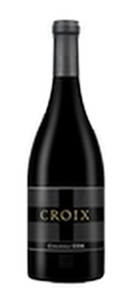 Variety: 59% Syrah, 23% Grenache, 18% Mourvedre | Method | Open Top Fermentation, 11-Day Cold Soak, 100% Carbonic Maceration With Hand Punch-Downs, Free-Run Transfer Via Gravity Flow To French Oak, Utilizing 100% Native Yeast Primary and Secondary Fermentations. Aging Regimen | 60% New French Oak, 18 Months
Variety: 59% Syrah, 23% Grenache, 18% Mourvedre | Method | Open Top Fermentation, 11-Day Cold Soak, 100% Carbonic Maceration With Hand Punch-Downs, Free-Run Transfer Via Gravity Flow To French Oak, Utilizing 100% Native Yeast Primary and Secondary Fermentations. Aging Regimen | 60% New French Oak, 18 Months
Once again, this wine is relentless in its exhibition of rich complexity. The senses are overwhelmed with white chocolate, strawberry compote, with smoked meats, fresh leather at the top end. Deeper still we find plums, blueberries, and cedar. Yowza! A cascading, mouth sheeting sensation overtakes the palate, with ripe, lush black fruits, smoked bacon, cola, blackberry pie, and a fatty deliciousness, finishing with a hint of barrel vanillin. What’s impressive is the massiveness of this wine is tamed with the right balance of acidity which makes it perfect for rich, sauce driven dishes and game focused meals.
To the Northwest of Cazadero Station lies a hidden foot trail that leads backcountry hikers on what is perhaps the most breathtaking, yet dangerous, treks out to the Annapolis ridgeline overlooking the coast at Stuart’s Point. Experienced hunters say the wild boar is more dangerous to hunt than most animals. Weighing in at 600+ pounds at full maturity, the males are territorial of all intruders and the females violently protective of their young. To the casual hiker, approaching the Kings Ridge section of the hike requires a soft shoe and keen hearing, lest you encounter the ferocity of these feral beasts. The boar was not indigenous to California, yet it has managed to survive and thrive untamed in the densely wooded, northern regions of the state. A testament to the strength and character of the species.
Small lot Grenache, Syrah, Mourvedre and the blended GSM captured our hearts decades ago coming up in the industry. Grown to perfection and in the right locations, there was magic in the bottle of these off-variety productions that offered a range of styles from quaffable, aromatic beauties to hedonistic ink bombs that everyone seemed to pan at our wine parties, despite not a drop being spared in the bottles of the heartier efforts. It was, particularly during the late 1990’s, with Zinfandel and GSM productions that we witnessed a cultural shift in production from lower alcohol wines to more fruit forward, fully ripened renditions. That’s where we come in with our version of GSM. Croix Estate enthusiasts have come to recognize that we are not shy about growing fruit to its optimal ripeness. However, where there is ripeness, there is balance and harmony, and our GSM Red Blend is no exception on both fronts.
$60 | 10 Barrels Produced
2023 Petaluma Gap Chardonnay | Sun Chase Vineyard, Petaluma Gap
GRAPE VARIETY: 100% Chardonnay| THE VINEYARD: Sun Chase Vineyard | Method: Wholecluster Direct Press Into Neutral French Oak, Native Primary & Secondary Fermentation
Sun Chase Vineyard is among the most highly sought-after vineyards in the Petaluma Gap AVA - a coastal mountain opening that draws brisk winds and cooling fog from the coast toward the San Pablo Bay. Located on a southwest facing hillside that sits at 1,400 feet above the valley floor, the vineyard consists of 248 acres grown in perpetual sunshine just above a persistent fog line. The cool breezes well up from the gap floor, influencing daytime diurnal temperature fluctuations, allowing for slow and even maturation of the fruit. The rocky hillside soils are derived from volcanic parent material known as basalt which has a low concentration of magnesium but very rich in minerals which is ideal for cultivating premium, cool-climate Pinot Noir and Chardonnay.
Hey, the previous vintage was delicious, but it doesn’t hold a candle to the 2023. When we think of California Chardonnay perfection this is it. This is a racy, complex, exotic Chardonnay with notes of Meyer lemon, flower oil, sweet citrus and toasted spice. Full-bodied, yet perfectly balanced with a stunning ridge of acidity, this Chardonay keeps you wanting more, with nuances of delicious ripe pear, creamy Crème brûlée, and a mouthwatering finish. If you prefer crisp, racy styles of the varietal, this is your jam.
$65 | 7 Barrels Produced
Acquire Your Allocation Here
The 5th Annual Bread & Butter Allocation | Spring 2025
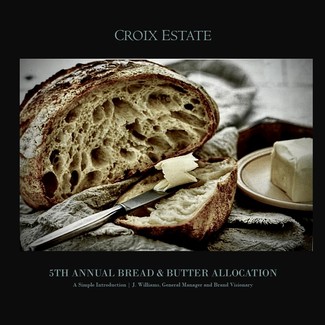 There is nothing like a hot, fresh loaf of Italian pugliese slathered in a spread of room temperature butter. I can smell and savor the memory of my days in the restaurant business while working for the late Michael Chiarello. I ate my salary in loaves of bread working for that man and enjoyed every moment. There is something innately satisfying when one finds a moment of enjoyment that fills oneself up completely. Think about it. I have spent enough time on this planet to appreciate when an experience is meaningful and one that I will never forget. For example, I remember the moment I had my first bottle of 1984 Williams Selyem Pinot Noir. The wine was so opaque I though it would be yet another vapid, sour experience with California Pinot Noir. Boy was I wrong! A self taught winemaker, Burt Williams was pure genius. The wine was Full of zest and flavor and an umami effect I like to call heavenly glide.
There is nothing like a hot, fresh loaf of Italian pugliese slathered in a spread of room temperature butter. I can smell and savor the memory of my days in the restaurant business while working for the late Michael Chiarello. I ate my salary in loaves of bread working for that man and enjoyed every moment. There is something innately satisfying when one finds a moment of enjoyment that fills oneself up completely. Think about it. I have spent enough time on this planet to appreciate when an experience is meaningful and one that I will never forget. For example, I remember the moment I had my first bottle of 1984 Williams Selyem Pinot Noir. The wine was so opaque I though it would be yet another vapid, sour experience with California Pinot Noir. Boy was I wrong! A self taught winemaker, Burt Williams was pure genius. The wine was Full of zest and flavor and an umami effect I like to call heavenly glide.
You see, I think there is beauty in simplicity and that is why I am not waxing away poetically on our 5th Annual Bread & Butter Allocation. Because, let’s face it, what more needs to be said? Every wine in this lineup is flat-out kick ass! The 2023 vintage is something I have not experienced since our inception. The vintage is divine. And 2024? Lookout because it compounds the beauty of the foundation we have found in 2023. What brings me the most joy in this moment is that we are bringing you guilt-free, drinking enjoyment for the fifth year in a row. These are gems at exceptional value points and we are proud to present them to you here.
Acquire Your Allocation Here
2023 1904 Estate Zinfandel | Croix Estate Vineyard, Russian River Valley
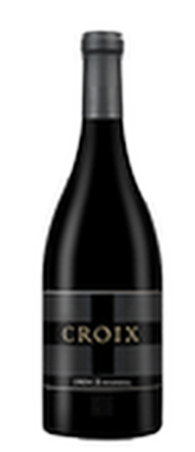 Varieties: 90% Estate Zinfandel, 10% Estate Alicante Bouchet | Method: 100% Pellenc destemmed, 50% Stainless, 50% Open Top, 100% Native Primary & Secondary, 55% New American Oak, 45% French Oak. Unfiltered. 16 Barrels Produced
Varieties: 90% Estate Zinfandel, 10% Estate Alicante Bouchet | Method: 100% Pellenc destemmed, 50% Stainless, 50% Open Top, 100% Native Primary & Secondary, 55% New American Oak, 45% French Oak. Unfiltered. 16 Barrels Produced
Once again, the 2023 vintage of this wine is humping some serious weight. This is another home run effort from our winemaking team. Our Croix Estate Vineyard Zinfandel is a heritage vineyard site. Planted in 1904, the original vineyard comprised of 39 acres planted in sections to Zinfandel, Carignan, Alicante Bouchet, Petite Sirah, and Mataro. Today, the vineyard consists of 10 acres of 90% Zinfandel and 10% Alicante Bouchet. Are you a fan of ripe, balanced, jammy Zins with zesty acid and a serious amount of viscosity? This wine is for you. This is pure bliss! Dark notes of brambly fruit, blackberries, blueberries, ripe fig, boysenberry, hints of clove licorice and white pepper. Exceptional. The mouthfeel is rich with dark fruits of plum black cherry and cassis take over the palate with balanced acid and tannin, finishing silky with racy acidity to clear the finish for minutes on end. A stunning work to contemplate. Don’t miss this.
$50
2023 Narrow Gauge Chardonnay | Middle Reach, Russian River Valley
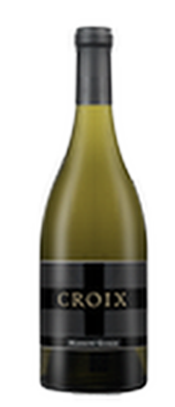 The Vineyards: Sebastopol Vineyard | Ritchie Vineyard | Dutton-Morelli Lane Vineyard | Richard Dinner Vineyard | Bacigalupi Vineyard | Chardonnay Clones: Old Wente, Dijon 76, Clone 4 | Method: Whole Cluster Press Into 50% Neutral, 50% New French Oak, 100% Native Primary & Secondary Fermentation, 9 Months Sur Lie, Rack & Return Aging Total 16 Months, Unfiltered. 15 Barrels Produced
The Vineyards: Sebastopol Vineyard | Ritchie Vineyard | Dutton-Morelli Lane Vineyard | Richard Dinner Vineyard | Bacigalupi Vineyard | Chardonnay Clones: Old Wente, Dijon 76, Clone 4 | Method: Whole Cluster Press Into 50% Neutral, 50% New French Oak, 100% Native Primary & Secondary Fermentation, 9 Months Sur Lie, Rack & Return Aging Total 16 Months, Unfiltered. 15 Barrels Produced
Another unbelievable effort is coming to you and one that you do not want to miss. This is an everyday drinking gem that is stylish, perfectly balanced, and a real joy to consume. Ripe fig, bosque pear, banana and apricot jam followed mineral hints of flintiness, fresh white roses coat your senses with aromas of honeysuckle whipped in truffles. On the palate we find mouth coating caramel, expresso beans, creamsicle, acid is well integrated into the wine leaving a crip finish on the palate, beautiful with pear salads, with blue cheeses. lathered in long moments of raw pleasure. We have said this before, and we will say it again—want to be a wine hero? Take this wine to any spring or summer party and watch people bow in reverence of your genius. Trust us.
$50
2023 Floodgate Pinot Noir | Russian River Valley
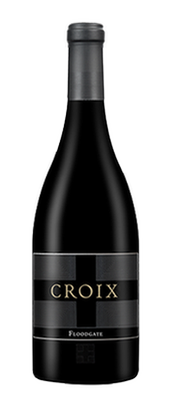 The Vineyards: 33% Bacigalupi Vineyard | 32% Ritchie Vineyard |21% Bucher Vineyard | 12% 5 Wells Vineyard | 2% Ruxton Vineyard |Pinot Noir Clones: Dijon 667, Dijon 777 & 828, Pommard, Vosne-Romanee, & Wente | Method: 90% Pellenc destemmed, 10% Wholecluster, 5 Day Cold Soak, 100% Carbonic Native Inoculation, Hand Punch Down Cap Submersions, 50% New French Oak, 16 Months. Unfiltered. 16 Barrels Produced
The Vineyards: 33% Bacigalupi Vineyard | 32% Ritchie Vineyard |21% Bucher Vineyard | 12% 5 Wells Vineyard | 2% Ruxton Vineyard |Pinot Noir Clones: Dijon 667, Dijon 777 & 828, Pommard, Vosne-Romanee, & Wente | Method: 90% Pellenc destemmed, 10% Wholecluster, 5 Day Cold Soak, 100% Carbonic Native Inoculation, Hand Punch Down Cap Submersions, 50% New French Oak, 16 Months. Unfiltered. 16 Barrels Produced
This wine just keeps getting better and better. Like playing a finely tuned, hand-made Gibson, our 2023 Floodgate Pinot will take your breath away. Explosion of red fruits of bright Bing cherry dark cherry or even raisins, cranberries, hints of tobacco and rose water, allspice, black tea, dusty cocoa. Wow! Hell yes! This is another level of full-bodied greatness! Beautiful mouthfeel that covers the palate with a variety of red fruits ranging from cherry, plum, pomegranate strawberries and raspberries, with hints of cedar and sweet tobacco. This is sexy stuff! Rich and full on the palate, this wine has substantial glide that will develop impressive weight over the next five years.
$60
2024 Fenceline Sauvignon Blanc | Croix Estate Vineyard, Russian River Valley
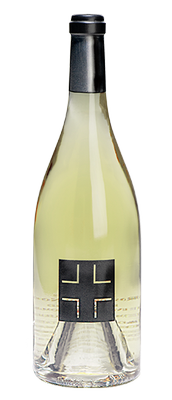 Sauvignon Blanc Clones: 100% Sauvignon Musqué | Method: Wholecluster Direct Press Into Neutral French Oak, Native Primary & Secondary Fermentation, Unfiltered. 5 Barrels Produced
Sauvignon Blanc Clones: 100% Sauvignon Musqué | Method: Wholecluster Direct Press Into Neutral French Oak, Native Primary & Secondary Fermentation, Unfiltered. 5 Barrels Produced
Ahh…Spring bliss is here and demands a bucket of ice next to your chair on the beach! Get ready for easy drinkin’ days to come. We don’t know about you, but we cannot get enough of our Fenceline Sauvignon Blanc. Each year brings forth something different and boy do we have a home run in the 2024 vintage! Tropical notes of ripe cantaloupe, melon, and kiwi with coconut oil open the senses on the first pass over the glass. Just lovely. Grindelia, ripe fig, and lemon blossom pull you into a state of elation. As with the 2023 vintage, on the palate we find our senses are deceived by full, silky, blood orange juiciness, sweet pink grapefruit, and lemon curd with a lengthy, bright and balanced finish. The acid carries the plushness of the wine brilliantly. At just 125 cases produced, you will want to scoop up as much of this wine as you can before it sells out. This wine is lovely, fun, and vibrant. Pack this in a bucket of ice next to the pool and bring a fresh blast of joy into your summer day!
$44
2024 Ruxton Sands Rose' of Pinot Noir | Ruxton Vineyard, Sonoma Coast
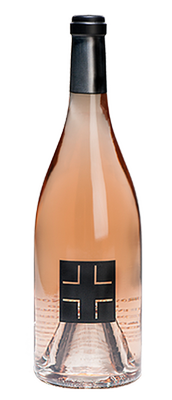 Variety: 100% Pinot Noir | Method: Wholecluster Direct Press Into Neutral French Oak, Native Primary & Secondary Fermentation, Unfiltered. 10 Barrels Produced
Variety: 100% Pinot Noir | Method: Wholecluster Direct Press Into Neutral French Oak, Native Primary & Secondary Fermentation, Unfiltered. 10 Barrels Produced
Sitting at 800 feet of elevation in the heart of the Occidental Cordillera of the Russian River Valley appellation, we choose a direct pick and press method when producing our Rosé from Ruxton Vineyard. The first thing you notice is the sexy, pale peach color of this wine, evoking an assumption of greatness in the glass. This is a compelling effort that will challenge the senses. Red apple with honey, fresh berries of black and raspberry, acidity is well balanced and yet allows for a more seasoned diner that enjoys more complex foods. A bright entry on the palate is followed by a medium-full mid-palate that is at once viscous yet delicate. This is delicious! Strawberry curd, and golden pear are complimented with refreshing, savory nuances of raspberries and cola, with a finish that is developed and elegant. $31
Acquire Your Allocation Here
THIS OLD GUITAR | Finding A Path To Appreciation
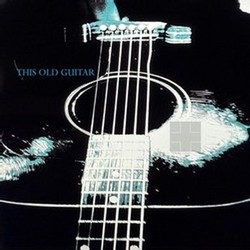 It’s 1978. There’s a stage, a cotton gin barn in the background surrounded by three hundred acres of cotton fields. The mood is festive with blankets spread out over a grassy patch next to the old farmhouse. The line for the slip n slide is 20 deep, the pool is full of laughter and high spirit banter, and a whole lot of hand-rolled “cigarettes” are being passed around. A covey of about 25 chickens, 4 ducks, and two baby goats strolled and intermingled throughout the crowd, while my Springer Spaniel, Dickens, followed them everywhere like a mother protecting her own adopted family. My goodness I loved that dog. I had just finished butchering and cleaning a handful of quail from our morning hunt, while my mother and her friends wrapped them into foil stuffed with onions, a pound of butter, and a whole lot of spices I could not describe to this day. Once prepared they were placed into the pit with 100 pounds of pork shoulder to slow cook in the ground for 12 hours on hot mesquite embers.
It’s 1978. There’s a stage, a cotton gin barn in the background surrounded by three hundred acres of cotton fields. The mood is festive with blankets spread out over a grassy patch next to the old farmhouse. The line for the slip n slide is 20 deep, the pool is full of laughter and high spirit banter, and a whole lot of hand-rolled “cigarettes” are being passed around. A covey of about 25 chickens, 4 ducks, and two baby goats strolled and intermingled throughout the crowd, while my Springer Spaniel, Dickens, followed them everywhere like a mother protecting her own adopted family. My goodness I loved that dog. I had just finished butchering and cleaning a handful of quail from our morning hunt, while my mother and her friends wrapped them into foil stuffed with onions, a pound of butter, and a whole lot of spices I could not describe to this day. Once prepared they were placed into the pit with 100 pounds of pork shoulder to slow cook in the ground for 12 hours on hot mesquite embers.
It was a smokey and loud environment with non-stop live music. The bluegrass band called an encore and stepped off the stage. And on the stage stepped a brunette. From what memory serves me she’s as tall as my mom, 5’1” or so, and she’s absolutely magnetic - beaming with electricity. She asked her band to step off the stage and invited everyone into the cotton gin barn. A magnificent, metal structure with 90-foot-high ceilings, corrugated steel walls, and skylights that lit the place with a light that shown a haze of dust from the steps of everyone entering the space. I have to paraphrase here, but what she said essentially was, “Two of the most talented men in song writing and composition wrote this song in 1975 and I would love to share that song with you all here tonight.”
There was no band, no microphone, no electrified music. Just her voice penetrating the room with such force that to this day I can feel the goose bumps cover my body, like a ghost passing through me. Her voice carried into the caverns of the cotton gin barn and echoed, like a chorus of angels filling the sky with light. If ever there were evidence of brilliance in the human condition, this person possessed it in such a simple, powerful level of harmony I have only experienced a handful of times in my life. I’m told that my memory of that day, and the song she sang was that of something titled, “After The Thrill Is Gone”. I was also told it was sung by a person who would become one of the most prolific Mexican/American performers of our time. A legend.
You see, for as long as I can remember, I’ve been surrounded by music performed by gifted human beings who bore the gift of allowing a force to flow through them that lit up a crowd. Call it nostalgia for more pure times, but there was a simple credence in having every weekend be a musical display on my uncle’s land back then. It was my dad who brought music into my life. I remember him singing music to me at a very young age while playing an old, black Gibson, which I own to this day. There’s nothing more magical than the sound of an old guitar. When my dad left me, far too young and far too early, he left me with four guitars. Instruments that I haven’t had the courage to open in a very, very long time. However, a few weeks ago, I finally opened the box, picked up this old guitar and I thought, man…this sure is a lot like making wine now isn’t it? What it reminds me of is the fact that when I pick up this old guitar, strum it a bit, the halls of that old cotton gin barn start to hum and fill. And, memories of some of the best days of my life begin to build and I remember why I got into this wine business in the first place.
Wine is a lot like music from an artistic perspective. Like writing a song, making wine starts with a starting point of the unknown. We grow and harvest the fruit and our best guess is perhaps there’s a hook in the lyric that will hit with our audience. We write, rewrite the stanza, the chorus, and put it into performance. In the case of wine, we make, protect, barrel age and begin to blend. And we work the “song” of that vineyard from which it was born. And that is the sexy part of winemaking. Because, in the grind of building the perfect alignment of voice within a wine, one finds a higher purpose to existence. We create, therefore we are. Art in its most simplistic terms is something that moves the soul to a higher plane of appreciation for the short time we will spend on this rock floating in the middle of the multiverse. Craft also has the same effect when we accomplish perfection in our winemaking. So let me get to the point
My friends, my eyes melt when I review the 2023 vintage and all of the wines we have created. Why? Because we have now been at this for thirteen years and our eleventh vintage is perhaps as close to perfection as we have ever come in producing Croix Estate wines. I would not be saying this unless the wines we have produced are now moving me – emotionally and spiritually - just as that voice once moved me all those years ago. When I say you do not want to take a pass on anything we’ve made from the 2023 vintage, I am saying this with absolute conviction that beauty floats in the glass with this vintage and it fills you up where maybe, just maybe, that small ounce of joy it brings into your life is enough to bring you fulfillment and appreciation for those around you who matter most, and for the things you do that bring you true fulfillment.
Acquire Your Allocation Here
2023 Richard Dinner Chardonnay | Richard Dinner Vineyard, Sonoma Mountain
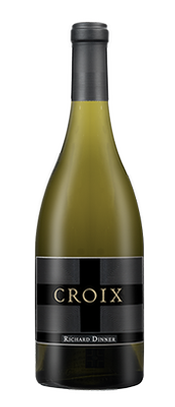 One of things we love about the 2023 vintage of Chardonnays is the razor balance that every wine has within them. They are distinct. Bright, rich and beautiful. We recently had friends over to the winery to preview the 2023 vintage of Chardonnays. One person who is absolutely a non-Chardonnay drinker walked away from that tasting saying, “I love Croix Chardonnay.” Listen, there is grace in our 2023 vintage not experienced in all of our years of making Chardonnay. We always like to say that Chardonnay, even in its “noble status”, is a winemaker’s variety because without the influence of the winemaker, its quite a simple tasting grape. As such, what we do with Chardonnay and how we make it pleasing and delicious is entirely up to us, with complete deference to what Mother Nature provides as a starting point.
One of things we love about the 2023 vintage of Chardonnays is the razor balance that every wine has within them. They are distinct. Bright, rich and beautiful. We recently had friends over to the winery to preview the 2023 vintage of Chardonnays. One person who is absolutely a non-Chardonnay drinker walked away from that tasting saying, “I love Croix Chardonnay.” Listen, there is grace in our 2023 vintage not experienced in all of our years of making Chardonnay. We always like to say that Chardonnay, even in its “noble status”, is a winemaker’s variety because without the influence of the winemaker, its quite a simple tasting grape. As such, what we do with Chardonnay and how we make it pleasing and delicious is entirely up to us, with complete deference to what Mother Nature provides as a starting point.
Sitting at a peak elevation of 2,000+ feet, facing west to the pacific ocean, directionally speaking, this vineyard lies at the target point of a roundhouse kick to the face in a lesson in location, location, location. Those familiar with the Petaluma Gap AVA know that late afternoon breezes can quickly turn to brisk fog-outs that blanket vast swaths of square mileage. Sonoma Mountain lies in this direct path. Few Sonoma County wine regions are so singularly defined by elevation, exposure, and geographical features as the Sonoma Mountain American Viticulture Area (AVA). Combine soil and micro-climate diurnal temperature variation, organic viticultural practices, a deft hand at coaxing the finer nuances in naturally produced Chardonnay, and you have the recipe for producing perfection in the glass. This is a must-have wine in your cellar.
$75 | 8 Barrels Produced
2023 12 Rows Chardonnay | Ritchie Vineyard, Middle Reach, Russian River Valley
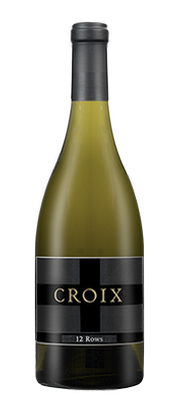 As we have written in prior wine notes regarding this wine, our 2023 12 Rows Chardonnay emotes distinct memories growing up among groves of white peach trees, letting you know with one sniff that pure deliciousness is at hand. This wine opens with zesty Meyer lemon rind, crème brûlée, and caramelized brown sugar causing the mouth to water with anticipation. There’s more racy delicacy laced with a dash of balanced, creamy richness in the 2023 that showcases a precise hand in the making of this wine. It’s a mouthful of ripe, white peaches, pink grapefruit, citrus curd and crisp, honey-baked apples. This is incredibly delicious! Our 12 Rows Chardonnay is our most popular Chardonnay and will sell out, so be sure to secure your allotment accordingly.
As we have written in prior wine notes regarding this wine, our 2023 12 Rows Chardonnay emotes distinct memories growing up among groves of white peach trees, letting you know with one sniff that pure deliciousness is at hand. This wine opens with zesty Meyer lemon rind, crème brûlée, and caramelized brown sugar causing the mouth to water with anticipation. There’s more racy delicacy laced with a dash of balanced, creamy richness in the 2023 that showcases a precise hand in the making of this wine. It’s a mouthful of ripe, white peaches, pink grapefruit, citrus curd and crisp, honey-baked apples. This is incredibly delicious! Our 12 Rows Chardonnay is our most popular Chardonnay and will sell out, so be sure to secure your allotment accordingly.
Considered among the greatest Chardonnay vineyards in the new world, Kent Ritchie is a regular, down-to-earth farmer enraptured by a vocation that compels him to work his land as he sees fit. As we have said before, humility in the face of such admiration is so very refreshing and reminds us that our daily bread is earned, one vintage at a time. We are blessed to be a part of Kent Ritchie’s greatness.
$75 | 8 Barrels Produced
2023 Starlings’ Roost Chardonnay | Dutton-Morelli Lane Vineyard, Green Valley, Russian River Valley
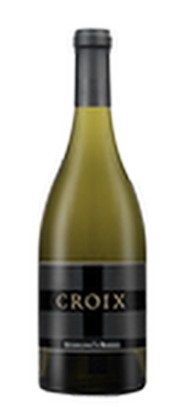 We sure love the purity of the 2023 vintage of this wine, as it restrains the honey and citrus character just enough to allow for a more polished effort. Scents of lightly toasted pine nuts, tart Meyer lemon curd broaden in the glass with fresh tea leaves that brings us back to our love for this site. Crisp Gravenstein apples and sweet citrus balance sweet and tart to perfection, leading to an expansive, lengthy finish of pineapple, cloves and a dash of toasty vanillin. Medium bodied and light on the viscosity, this wine is refreshing, vibrant, and worthy of decade in the cellar.
We sure love the purity of the 2023 vintage of this wine, as it restrains the honey and citrus character just enough to allow for a more polished effort. Scents of lightly toasted pine nuts, tart Meyer lemon curd broaden in the glass with fresh tea leaves that brings us back to our love for this site. Crisp Gravenstein apples and sweet citrus balance sweet and tart to perfection, leading to an expansive, lengthy finish of pineapple, cloves and a dash of toasty vanillin. Medium bodied and light on the viscosity, this wine is refreshing, vibrant, and worthy of decade in the cellar.
Our quest to produce Chardonnay that will age for a decade or longer began with the 2012 vintage of Starlings’ Roost Chardonnay. We were enraptured by this site’s history, location, and the deafening cacophony emanating from thousands of roosting Starlings. Positioned within the Occidental Cordillera, this is home to hallowed earth, revered by many a talented winemaker. Planted in the late 1890’s, it is a temperate vineyard location sitting above the fog line, subject to piercing, midday sunshine, deceiving its proximity to the Pacific Ocean. It is this terroir that makes this vineyard compelling and challenging with each vintage production.
$75 | 7 Barrels Produced
2022 Kings Ridge Pinot Noir | Cinghiale Vineyard, Fort Ross-Seaview, Sonoma Coast
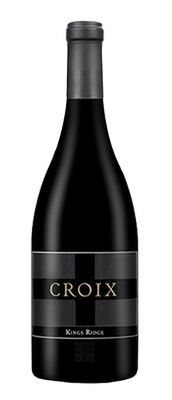 This is perhaps on of our most substantial, complex Pinot Noirs within our portfolio of single-vineyard Pinot Noirs. This wine is a rare beauty that is bottle aged for 12 months prior to its release, and at just 5 barrels produced, you do not want to pass on the 2022 vintage of this wine. Black cherries, licorice, sweet tobacco leaf, blue herbs, cream soda, and cardamom pull you in. This wine is massive and full-bodied on the palate without being pushy or overweighted. Plum concentrate, black fruit compote, raspberries, and crushed espresso bean, with mouthwatering acidity and a perpetual finish. It achieves the perfect glide from start to finish. Pure perfection in the glass!
This is perhaps on of our most substantial, complex Pinot Noirs within our portfolio of single-vineyard Pinot Noirs. This wine is a rare beauty that is bottle aged for 12 months prior to its release, and at just 5 barrels produced, you do not want to pass on the 2022 vintage of this wine. Black cherries, licorice, sweet tobacco leaf, blue herbs, cream soda, and cardamom pull you in. This wine is massive and full-bodied on the palate without being pushy or overweighted. Plum concentrate, black fruit compote, raspberries, and crushed espresso bean, with mouthwatering acidity and a perpetual finish. It achieves the perfect glide from start to finish. Pure perfection in the glass!
Most enthusiasts push-back on north coast Pinot Noir because it tends to skew acidic, light, and lacking the pleasantries we often find in a straight Russian River Valley Pinot Noir. It doesn’t have to be this way. We have increased hang-time in the growing cycle to increase core tannin and flavor development in the fruit. The results are stunning. If ever there were an “elite” vineyard classification system within the Russian River Valley and Sonoma Coast appellations, Cinghiale Vineyard would sit squarely within this classification. Purchased by Dave Del Dotto in 2005, the “Cinghiale” (Italian for wild boar) Vineyard is named for the frequent inhabitants of the property. Overlooking the Pacific Ocean, it consists of 359 acres at the top of Kings Ridge in the Fort Ross-Seaview appellation, and is planted with 43-acres of Pinot Noir. It features a broad diversity of Pinot Noir clones with lineages hailing from the top vineyards in Burgundy, as well as select top-rated clones from its neighbors in California. Our production combines Clone 828 and 777, 10% whole cluster into open top fermenters.
$105 | 5 Barrels Produced
Acquire Your Allocation Here
There's No Space Program For Quitters
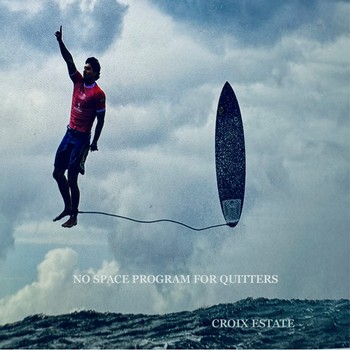 Breaking the gravitational pull of complacency to accomplish something remarkable takes a mammoth effort.
Breaking the gravitational pull of complacency to accomplish something remarkable takes a mammoth effort.
It was a balmy, sunny July afternoon standing at the shore on Huntington Beach. A light, offshore breeze intermingled with salty, sea air cooled the sand under my feet just enough to feel the variance between earth and sky. The Huntington pier was packed with people in shorts, bathing suits, and sandals. Along the western tip of the pier sat the same, old salty regulars fishing off the pier for bottom dwelling fish. The smell of chili cheese dogs and Hawaiian Tropic suntan oil permeated the air amid striped umbrellas and beach beauties seeking a savage, Southern California tan. This moment was perfect. This was my day.
I remember my first time taking up surfing like it was yesterday. I had been boogie-boarding for a couple years prior when I decided to follow my cousin into the water on a surfboard. My first board was a Rusty, 5’6” thruster that was pre-owned with a little sun aging around the edges. It may have been used, but to me, it was a coveted possession. I paid $45 for the board by saving the allowance money I earned during the summer stays with my aunt. I was just 11 years old, standing in the sand at Huntington Beach, with a vision of becoming the next Shaun Tomson. Reflecting upon the moment now, the surf wasn’t all that big, however, the lineup was packed with men and women charging the break with authority, which made the surf seem like it was ten feet and swelling.
As I began to paddle out, I suddenly slipped off the surfboard. Wrapped up in my Shaun Tomson moment, I had forgotten to wax the board top for grip and stability. Humbly walking back to shore, I waxed up, swallowed my embarrassment and dove in. Beginning to paddle out again, I encountered my first wave on a surfboard. There is a move surfers perform called a duck dive. Essentially, you thrust your board under the wave, and duck out on the other side. However, if you leave the tail of your board in a vertical position during your dive, this causes the wave to grab the tail of the board and drag you, helplessly, a good distance back to shore. Getting dragged sucks. So, starting again, I paddled into the first major set coming in, where a row of six waves with big, frothy faces plowed into the shore break. The first three were successfully ducked, but then I felt a deep fatigue set in, and by the fifth wave, I got drug all the way back to within reach of the shore. Adjusting my confidence and catching my breath, I began again, not recognizing that the second set was rolling in. You see, I learned a brutal, vital lesson in that moment called timing the set, as I was dragged all the way back, yet again. This went on for a good hour before I lost my chili cheese lunch in the surf and crawled back onto the beach, collapsing in exhaustion. Some Shaun Tomson I turned out to be on that day. .
Think about any vocation, hobby, or sport you participate in that compels you to be the best you. Now remember how much effort you have put into mastering that pursuit. 15 years ago a scrap of paper was left on my desk with no explanation. Scrawled across it was a name: “Croix.” That simple, mysterious French inscription became a crossing point in our winery’s path to pursue the extraordinary. In 2009, an abalone dive on the northern California coast, followed by a blind tasting of Pinot Noir from multiple wine regions, would solidify the pursuit for Croix in a question: How do we enter the crowded market for luxury Pinot Noir and Chardonnay and consistently produce wines that are remarkable? The simple answer was then, as it is now, we are willing to fail—a lot. I have always enjoyed explaining our company’s penchant for change and achievement by saying, “There’s no space program for quitters.” By this phrase I mean to say that achieving your moonshot moment in anything you do in life will require the endurance of failure. However, failure is not quitting. Quitting is failing and giving up on your dream.
This sentiment rings true in our pursuit of perfection in producing Pinot Noir that achieves the perfect glide. It is that umami effect when all the components come together just perfectly in a glass of Pinot Noir. And, to come full circle on the surfing metaphor, it takes a whole lot of paddling out and getting drug back to shore before you finally break out into the lineup to catch that perfect wave. Speaking of perfect waves.
Look out - here comes a monster set from two of our most popular wines in our lineup. These are magnificent, perfect renditions of greatness in Pinot Noir not to miss! As always, thank you for your enthusiasm and support in all that we do.
Acquire Your Allocation Here
2022 Stoetz Ridge Pinot Noir | Ruxton Vineyard, West Sonoma Coast
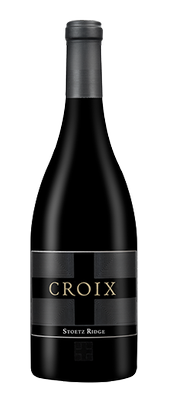 Pinot Noir Clone 667: Method | 100% Pellenc Destemmed, 5 Day Cold Soak, 100% Carbonic D254 Inoculation Open Top Fermentation With Hand Punch Down Cap Submersion + Aging Regimen | 50% New French Oak, 16 Months + Production | 6 Barrels, Bottled Unfiltered
Pinot Noir Clone 667: Method | 100% Pellenc Destemmed, 5 Day Cold Soak, 100% Carbonic D254 Inoculation Open Top Fermentation With Hand Punch Down Cap Submersion + Aging Regimen | 50% New French Oak, 16 Months + Production | 6 Barrels, Bottled Unfiltered
If you haven't been to visit us in some time, then you may have missed our debut release of the 2021 Stoetz Ridge Pinot Noir, as we sold all of that directly from our tasting room. Having found this wine to be remarkable in stature and complexity, and worthy of sitting at the pinnacle of our Pinot Noir production, we are letting this delicious beast out of its gates. In Burgundy, France, the highest level of vineyard classification is Grand Cru, or those appellations that are considered the elite within the growing region. While California does not have such a classification system, if ever there were an “elite” vineyard classification system within the Russian River Valley and Sonoma Coast appellations, Ruxton Vineyard would sit squarely within this classification. Within the vicinity of Silver Eagle and 5 Wells Vineyards, coming off of Stoetz Lane, and not so far from Camp Meeker, lies the Ruxton Vineyard. Sitting at 800 feet of elevation atop Stoetz Ridge, this vineyard lies ideally planted to Pinot Noir clones 667, 777, and 115 where cool climate conditions and sandy loam soils create the perfect environment for producing exceptional Pinot Noir. We are fortunate to have access to this vineyard that is well-known as the hidden gem amongst the winegrowing elite. Fans of our South Block Six Pinot Noir will love this wine! Aromatically stunning, this wine opens with allspice, pink peppercorn, beechnut, baking flour, fruit cake, black plum pulp and baked gingerbread. The mouthfeel is dense, viscous, layered and extracted with pomegranate concentrate, semi-sweet chocolate, ripe fig, black cherry licorice. Full-bodied and complex with weight-lifting acidity, this is a wine worthy of extended contemplation.
$110
2022 ol' Manzana Pinot Noir | Dutton-Manzana Vineyard, Green Valley, Russian River Valley
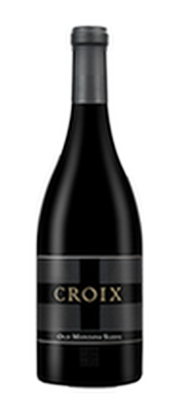 Pinot Noir Clone 667: Method | 100% Pellenc Destemmed, 5 Day Cold Soak, 100% Native Carbonic Maceration In Open Top Fermentation With Hand Punch Down Cap Submersion + Aging Regimen | 50% New French Oak, 16 Months + Production | 6 Barrels, Bottled Unfiltered
Pinot Noir Clone 667: Method | 100% Pellenc Destemmed, 5 Day Cold Soak, 100% Native Carbonic Maceration In Open Top Fermentation With Hand Punch Down Cap Submersion + Aging Regimen | 50% New French Oak, 16 Months + Production | 6 Barrels, Bottled Unfiltered
Located in the Green Valley sub-appellation of the Russian River Valley, just across Purrington Creek outside of the town of Graton, the Manzana Vineyard is planted on a gently sloped hillside composed of Goldridge soils. The name “Manzana,” Spanish for apple, honors the area’s long heritage of apple orchards. Manzana’s hillside vineyard is eastern facing, which is optimal for ripening Pinot Noir in cooler growing regions. Planted to clone Dijon 828 and Dijon 115 in 2001, this vineyard sits on a sloped foundation of Goldridge soil with ideal drainage into Purrington Creek. The vineyard is a certified Sonoma County Sustainably-Farmed and Fish-Friendly vineyard. The site produces moderately sized vines with small clusters. Cool growing conditions due to the morning fog allow the Pinot Noir to ripen slowly, developing tannic acids overtime that lead to pure balance in the fruit base. Of all of the Pinot Noirs we produce, Manzana has proven to be the Pinot Noir that will stand the test of time. Our first vintage produced from this vineyard was 2012 and has been nothing but impressive ever since. To this day, the 2012 vintage continues to be fresh, full, and alive with very little oxidation in color or body, a testament to the pedigree of the site. A full, bold, yet sexy style of Pinot Noir, the nose opens with aromatic concentrations of blue herbs, wild flowers, allspice and a dash of fresh earth. The mouthfeel instantly engages the intellect with exotic expansiveness, tongue curling acidity, and a savory glode that finishes with substantial length on the palate. Full, yet balanced to perfection, this wine rewards the senses over and over again with each sip. Anticipated maturity window: 2021 to 2033. A perfectly-balanced approach with a very full finish. Delicious!
$95
Acquire Your Allocation Here
Autumn 2024 | A Pig In A Poke | The 2nd Annual Mo' Butta Allocation
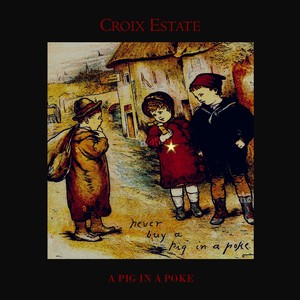 The man waives his arms demonstrably as if to pronounce importance and gravity in knowing all there is to know about Pinot Noir. He’s pulling it off confidently in a rare, neck out performance. “You should be selling this Pinot Noir for at least $800 a bottle!” He’s speaking of our 2021 Kings Ridge Pinot Noir and he’s dropping all the right names in the same breath: Domaine Leroy Musigny Grand Cru, Domaine de la Romanée-Conti Romanée-Conti Grand Cru, Domaine Roumier Musigny Grand Cru, Weingut Daniel & Marta Gantenbein, Domaine Takahiko Nana-Tsu-Mori, and Marcassin. Phew! He’s a fast talker and he’s swelling my ego like a wet cork on a hot, summer day. He hits all the high points on making wine too: 100% organic vineyard to barrel processing, native fermentations, low sulfur maintenance, hand punch downs, cold soaks, and on it goes.
The man waives his arms demonstrably as if to pronounce importance and gravity in knowing all there is to know about Pinot Noir. He’s pulling it off confidently in a rare, neck out performance. “You should be selling this Pinot Noir for at least $800 a bottle!” He’s speaking of our 2021 Kings Ridge Pinot Noir and he’s dropping all the right names in the same breath: Domaine Leroy Musigny Grand Cru, Domaine de la Romanée-Conti Romanée-Conti Grand Cru, Domaine Roumier Musigny Grand Cru, Weingut Daniel & Marta Gantenbein, Domaine Takahiko Nana-Tsu-Mori, and Marcassin. Phew! He’s a fast talker and he’s swelling my ego like a wet cork on a hot, summer day. He hits all the high points on making wine too: 100% organic vineyard to barrel processing, native fermentations, low sulfur maintenance, hand punch downs, cold soaks, and on it goes.
He’s relentless in the pursuit of sharing his credentials: WSET-IV, Certified Sommelier, MS, MW, all crowding his card like a resume where the only thing missing is the GPA. He’s gorgeous, yet rugged, like the most interesting man in the world, Dos Equis guy. He’s pulling out all the stops and boosts an added bonus: He’s dressed immaculately. Head-to-toe tailoring and sparing no expense. Kitton men’s wool cashmere herringbone suit, Del Toro loafers, and a stunning Patek Philipe watch. And, he smells like a god (though, ironic that he’s wearing fragrance to a wine tasting event).
As he takes a breath, swirling his glass vigorously, and burrowing his nose deeper into his glass than a Lagotto Romagnolo hunting for truffles, I break in to ask the obvious question.
“So tell me about your winemaking experience – I can only imagine, but let me guess, Domaine Leroy? Or is it all of the aforementioned from Burgundy?” I witness his confidence crack with a slight twitch under his left eye. He mumbles inaudibly, blue eyes darting, looking for his wolf pack, all of which have moved on to other winery tables. There is no one to buffer his bluff. Hmmmm…, so I press on. “Okay, if not a winemaker, then you must have worked in executive wine sales?” More mumbles and avoidance and more demonstrative hands now flailing a bit, as he pretends to lose interest in the wines and the conversation.
It then occurs to me, this man is selling a pig in a poke. He's all book smarts with zero field time and he’s never been in the wine business. He’s put on one hell of a show, and he’s nearly pulled it off.
As he stands before me, he realizes he’s trapped and needs a way out. And, he finds it. He sees that DuMol is pouring two tables down from me and proclaims, “Aha! DuMol. My friend now that is pure Pinot perfection right there, wouldn’t you agree? Top of the rock!” He shuffles away swiftly, stage right, and I hear him bellow, “Tell me, no let me guess, $1,100 a bottle?” Just like that, he’s back to doing what he does best.
I get it. Sometimes it is difficult to discern what makes a great bottle of Pinot Noir “great.” Right? I have heard from a number of you and how you have given up on collectible Pinot Noir because you have been “burned” by the illusive, temperamental nature of the variety. Unfortunately, most often the number one gravitational point in determining a luxury wine is its price. And let’s face it, one winemaker’s juice is another person’s gold if price positioned properly. A famous winemaker once said, “You cannot make great wine from bad grapes.” But many sure put up a good show because the economic reality of this business is challenging. How else can a winery compete unless it follows the herd to stay relevant?
The historic rise in the volume of wines moving to a luxury tier position is a recent phenomenon within American winemaking circles that is driving many consumers away from our trade. The fact is, nothing has changed in terms of winemaking or grape sourcing - other than the luxury positioning the brand is now seeking. While that may be one direction many are adopting within the wine business, we have chosen our own path.
We are in pursuit of perfection. Our ultimate pinnacle – where we are going – is to grow and produce Pinot Noir from every subregion throughout Sonoma County with the objective to eventually combine micro amounts of those subregions into one, magnificent Pinot Noir. When produced to perfection, and in only the finest vintages, this Pinot Noir will age gracefully for 20 years.
It is a big ask. I know. However, when we do get there and we do ask you to believe in this effort, you can rest assured of one thing: we won’t be selling you a pig in a poke.
Speaking of pigs. We have changed the name of what was our “La Cinghiale” GSM to the new – and appropriate – Cinghiale Rosso GSM. Friends, this wine is off the charts delicious. Know what else rocks in this Autumn release? West Pyramid Pinot Noir from the Bucher Vineyard. Better than ever, this is a don’t miss release. And, finally, our new house favorite among the Croix Estate team is the debut vintage of Petaluma Gap Chardonnay from the Sun Chase Vineyard. This stuff is lip smackin’ deliciousness.
Get in here, have some fun, and take advantage of cascading savings. We thank you for your support of our dreams. Without you, Croix Estate is not possible.
Acquire Your Allocation Here
2022 West Pyramid Pinot Noir | Bucher Estate Vineyard, Russian River Valley
 GRAPE VARIETY(S): 100% Pinot Noir Clone, Pommard | THE VINEYARD(S): Buchar Vineyard, Middle Reach
GRAPE VARIETY(S): 100% Pinot Noir Clone, Pommard | THE VINEYARD(S): Buchar Vineyard, Middle Reach
Yeah baby! This is gorgeous, mouthwatering stuff. Opening up with sexy, fragrant tangerine and orange rind, white pepper, honeysuckle, sweet saddle leather, strawberry cream, cardamom, Cuban pipe-tobacco, a dash of Earl Grey tea, and a full serving of cherry cola. The mouth is watering for what comes next. Ripe fig, Bosque pear, blue herbs, baked red fruit pie, a touch of toasted oak, finishing silky, peppery, bright and rich with substantial glide, with the perfect balance of ripe fruit and backbeat harmony. WOW! The Buchar family operation is an all-american, immigrants make good on a dream through self-determination story. Joe and Annemarie immigrated from Luzern, Switzerland in 1950, settling first in San Jose with a dream of owning a dairy farm in Northern California. Born in 1929, Joe came from a family of dairy farmers in the tiny town of Inwil. With dairy farming in his blood, Joe was determined to establish his own operation to continue the family legacy in the United States. By 1958 Joe and Annemarie had located a 360-acre dairy for sale just outside the town of Healdsburg. The two invested their life savings on the purchase and began their journey with just 50 head of dairy cows and a few calves, making the decision to produce organic milk from cows raised on a strict diet of organic alfalfa and hay. This would set the bar high for parceling land from which to farm grapes. Their son John graduated from UC Davis in 1984 and returned to Healdsburg to manage the dairy operation. John recognized an opportunity to diversify their land with a high value crop in vitis vinifera, in particular, Pinot Noir and Chardonnay. Convincing his parents of the decision to branch into the winegowing business, the first vineyard blocks of Pinot Noir were planted in 1997. Located adjacent to Buchar Farms on Westside Road, in the heart of the Middle Reach of the Russian River Valley AVA, Buchar Vineyards consists of 38 sustainably farmed acres, two of which are planted to Chardonnay. The 36 acres of Pinot Noir are broken into 14 distinct blocks, utilizing 10 distinct clones: Opa’s (943, Mariafeld, Calera), Rock Ridge (Pommard), Saddle (Swan), West Pyramid (Pommard), North Pyramid (Pommard), Pear Tree (Dijon 667), South Hill (Dijon 115, Mt. Eden), Frost Hill West (Mt. Eden), Frost Hill East (Mt. Eden), North L (Dijon 777), Torry’s (Pommard), Raspbery (Pommard), House (Dijon 115), and South L (777).
$68
2022 Cinghiale Rosso GSM Red Blend | Kick Ranch Vineyard, Rincon Valley
 GRAPE VARIETY(S): 58% Syrah, 38% Grenache, 9% Mourvedre THE VINEYARD(S): Kick Ranch Vineyard, Rincon Valley
GRAPE VARIETY(S): 58% Syrah, 38% Grenache, 9% Mourvedre THE VINEYARD(S): Kick Ranch Vineyard, Rincon Valley
To the Northwest of Cazadero Station lies a hidden foot trail that leads backcountry hikers on what is perhaps the most breathtaking, yet dangerous, trek out to the Annapolis ridgeline overlooking the coast at Stuart’s Point. Weighing in at 600+ pounds at full maturity, the boar males are territorial of all intruders and the females violently protective of their young. To the casual hiker, approaching the Kings Ridge section of the hike requires a soft shoe and keen hearing, lest you encounter the ferocity of these feral beasts. The boar was not indigenous to California, yet it has managed to survive and thrive untamed in the densely wooded, northern regions of the state. A testament to the strength and character of the species. Small lot Grenache, Syrah, Mourvedre and the blended GSM captured our hearts decades ago coming up in the industry. Grown to perfection and in the right locations, there was magic in the bottle of these off-variety productions that offered a range of styles from quaffable, aromatic beauties to hedonistic ink bombs that everyone seemed to pan at our wine parties, despite not a drop being spared in the bottles of the heartier efforts. It was, particularly during the late 1990’s, with Zinfandel and GSM productions that we witnessed a cultural shift in production from lower alcohol wines to more fruit forward, fully ripened renditions. That’s where we come in with our version of GSM. Croix Estate enthusiasts have come to recognize that we are not shy about growing fruit to its optimal ripeness. However, where there is ripeness, there is balance and harmony, and our Croix Estate Cinghiale GSM Red Blend is no exception on both fronts. Massive yet balanced with relentless complexity, this wine smashes the senses with honey smoked meats, saddle leather, sweet white chocolate, strawberry compote, blueberries, bruised plums, blue herbs, and sweet cedar. Whoah! A roaring, mouthcoating sensation overtakes the palate, with lush, dark fruits, cherry cola, rhubarb pie, and an undertow of smoked bacon and fatty deliciousness, finishing with a hint of vanilla cream. This wine is full and complete. It is avant-gard jazz in a glass, The Buddie Ritch of wine that keeps your head groovin’ to the beat. You will absoluytely love this wine.
$60
2022 Petaluma Gap Chardonnay | Sun Chase Vineyard, Petaluma Gap
GRAPE VARIETY: 100% Chardonnay| THE VINEYARD: Sun Chase Vineyard | Method: Wholecluster Direct Press Into Neutral French Oak, Native Primary & Secondary Fermentation
Sun Chase Vineyard is among the most highly sought-after vineyards in the Petaluma Gap AVA - a coastal mountain opening that draws brisk winds and cooling fog from the coast toward the San Pablo Bay. Located on a southwest facing hillside that sits at 1,400 feet above the valley floor, the vineyard consists of 248 acres grown in perpetual sunshine just above a persistent fog line. The cool breezes well up from the gap floor, influencing daytime diurnal temperature fluctuations, allowing for slow and even maturation of the fruit. The rocky hillside soils are derived from volcanic parent material known as basalt which has a low concentration of magnesium but very rich in minerals which is ideal for cultivating premium, cool-climate Pinot Noir and Chardonnay. Winner, winner, chicken dinner! A new “house favorite”, this is an exotic, complex Chardonnay with notes of flower oil, Meyer lemon, candle wax, toasted spice, and sweet citrus. Rich and full-bodied, yet deftly balanced with a cleansing ridge of acidity, this Chardonnay captures the imagination with nuances of delicious ripe pear, creamy Crème brûlée, and a mouthwatering finish. Fans of crisp, full styles of the variety with love this rendition.
$65
Acquire Your Allocation Here
WE HAVE A DREAM | For The Curious & The Astute Alike
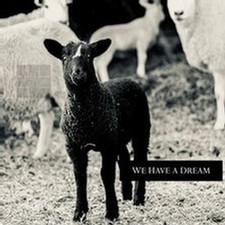 We have a dream: To create beautiful, seamless aesthetic surroundings where one finds refreshment for the soul seeking refuge from the cacophony of daily life. To provide a holistic contemplation where anyone can find access to experiencing the finest wines humankind has to offer, should that be their desired pursuit. Ours is an experience where the curious newcomer can comingle with the astute collector to lift our glasses in appreciation for participation in what we believe is the most fascinating vocation on the planet.
We have a dream: To create beautiful, seamless aesthetic surroundings where one finds refreshment for the soul seeking refuge from the cacophony of daily life. To provide a holistic contemplation where anyone can find access to experiencing the finest wines humankind has to offer, should that be their desired pursuit. Ours is an experience where the curious newcomer can comingle with the astute collector to lift our glasses in appreciation for participation in what we believe is the most fascinating vocation on the planet.
We have a dream: Where unlimited possibilities in winemaking are embraced and respected for the courage, the grind, and the determination it takes to reach greatness in our industry. Where revelations through experimentation elbow out hardened, stale systems of false efficiency and learned laziness. Where mediocre wine is always discarded in the pursuit of achieving perfection.
We have a dream: Where apologies are made for nothing, not for our best-in-show client service that values the human experience; not for our fun-loving, storytelling hospitality that holds you captive for two hours; not for our luscious, vibrant grounds where the ride to entry is as bumpy as it was one-hundred years ago; not for producing full bodied, full flavored, beautifully balanced wines worthy of bearing our name; and, not for our pure grit that sometimes grinds others the wrong way.
12 years ago we bonded our first vintages of Chardonnay and Pinot Noir. To this day, our dream stands on the shoulders of giants come before us, extrapolating core knowledge-diamonds from which we build gems and jewels that reflect our shared vision of perfection; taking the precedent of history and applying it to our growing environment to produce wines that are identifiable as Croix Estate.
Your Winter allocation contains the pinnacle of greatness within our portfolio of production. These wines are renditions worthy of consideration from the novice and the collector alike. As always, all wines are produced in less than 200 case increments.
With gratitude, in advance, for your continued engagement in our journey.
Acquire Your Allocation Here
2022 Richard Dinner Chardonnay | Richard Dinner Vineyard, Sonoma Mountain
 Varieties 100% Chardonnay | Method: 100% Wholecluster Pressed, 100% Native Primary & Secondary, 45% New French Oak, Unfiltered.
Varieties 100% Chardonnay | Method: 100% Wholecluster Pressed, 100% Native Primary & Secondary, 45% New French Oak, Unfiltered.
Leave it to the coastal gods to teach us a thing or two about the long arm of coastal influence deep into the southeastern reaches of Sonoma County. Sitting at a peak elevation of 2,000+ feet, facing west to the pacific ocean, directionally speaking, this vineyard lies at the target point of a roundhouse kick to the face in a lesson in location, location, location. Those familiar with the Petaluma Gap AVA know that late afternoon breezes can quickly turn to brisk fog-outs that blanket vast swaths of square mileage. Sonoma Mountain lies in this direct path. Few Sonoma County wine regions are so singularly defined by elevation, exposure, and geographical features as the Sonoma Mountain American Viticulture Area (AVA). Combine soil and micro-climate diurnal temperature variation, organic viticultural practices, a deft hand at coaxing the finer nuances in naturally produced Chardonnay, and you have the recipe for producing perfection in the glass. Like all of our 2022 vintage Chardonnays, this is another stunning, complex Chardonnay. Spicy, zesty lemon rind are interlaced with tropical flower oil, sweet citrus, and exotic spices building an aromatic dream. Full-bodied, rich and yet deftly balanced with sharp acidity, caramel and rum cream leading to a savory and delicious balance of charred crème brûlée, ripe pears, and a structured, mouthwatering finish.
$75 | 8 Barrels Produced
2022 12 Rows Chardonnay | Ritchie Vineyard, aThe Middle Reach, Russian River Valley
 Varieties 100% Chardonnay | Method: 100% Wholecluster Pressed, 100% Native Primary & Secondary, 45% New French Oak, Unfiltered.
Varieties 100% Chardonnay | Method: 100% Wholecluster Pressed, 100% Native Primary & Secondary, 45% New French Oak, Unfiltered.
Considered among the greatest Chardonnay vineyards in the new world, Kent Ritchie is a regular, down-to-earth farmer enraptured by a vocation that compels him to work his land as he sees fit. As we have said before, humility in the face of such admiration is so very refreshing and reminds us that our daily bread is earned, one vintage at a time. We are blessed to be a part of Kent Ritchie’s greatness. This Chardonnay emotes distinct memories growing up among groves of white peach trees, letting you know with one sniff that pure deliciousness is at hand. This wine opens with vanilla crème brûlée, Meyer lemon rind, and caramelized brown sugar causing the mouth to water with anticipation. There’s more racy delicacy laced with a touch creamy richness in the 2022 that showcases a precise hand in the making of this wine. Pink grapefruit, a mouthful of ripe, white peaches, and citrus curd are topped with sweet lemon cream and crisp, honey-baked apples. My goodness this is so delicious! Unfortunately, we lost half of our normal take to early frosts. This wine will sell out.
$75 | 5 Barrels Produced
2022 Srtarlings' Roost Chardonnay | Dutton-Morelli Vineyard, Green Valley, Russian River Valley
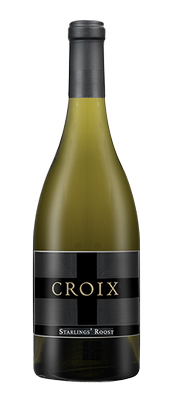 Varieties 100% Chardonnay | Method: 100% Wholecluster Pressed, 100% Native Primary & Secondary, 45% New French Oak, Unfiltered.
Varieties 100% Chardonnay | Method: 100% Wholecluster Pressed, 100% Native Primary & Secondary, 45% New French Oak, Unfiltered.
Our quest to produce Chardonnay that will age for a decade or longer began with the 2012 vintage of Starlings’ Roost Chardonnay. We were enraptured by this site’s history, location, and the deafening cacophony emanating from thousands of roosting Starlings. Positioned within the Occidental Cordillera, this is home to hallowed earth, revered by many a talented winemaker. Planted in the late 1890’s, it is a temperate vineyard location sitting above the fog line, subject to piercing, midday sunshine, deceiving its proximity to the Pacific Ocean. It is this terroir that makes this vineyard compelling and challenging with each vintage production. Boy do we love the ridge of acidity we are getting from the 2022 vintage of this wine, as it restrains the honeyed character just enough to allow for a more polished, pure effort. Earl Grey tea, tart Meyer lemon curd broaden with fresh tea leaves and lightly toasted pine nuts brings us back to our love for this site. Crisp Gravenstein apples and sweet pink grapefruit balance sweet and tart to perfection, leading to an expansive, lengthy finish of Hawaiian pineapple, cloves and a dash of toasty vanillin. Medium bodied and light on the viscosity, this wine is refreshing, vibrant, and worthy of decade in the cellar.
$75 | 8 Barrels Produced
2021 Kings Ridge Pinot Noir | Cinghiale Vineyard, Fort Ross-Seaview, Sonoma Coast
 Pinot Noir Clones: 828 & 777 | Method: 90% Pellenc destemmed, 10% Wholecluster, 5 Day Cold Soak, 100% Carbonic Native Inoculation, Hand Punch Down Cap Submersions, 50% New French Oak, 16 Months. Unfiltered.
Pinot Noir Clones: 828 & 777 | Method: 90% Pellenc destemmed, 10% Wholecluster, 5 Day Cold Soak, 100% Carbonic Native Inoculation, Hand Punch Down Cap Submersions, 50% New French Oak, 16 Months. Unfiltered.
A super-sexy, summer-sipping dream, our Estate SB is extremely limited in production with a cult following. As we always explain, just two rows exist on our estate, so delightful surprises in small batches continue to impress us from this sliver of vines. Enticing aromas of highly perfumed Amalfi lemons and citrus blossom mingle in with fresh wheat grass, white rose, honeysuckle and gardenia. On the palate, honey infused sweet pink grapefruit, base minerality, and Meyer lemon rind are delicately balanced with bright acidity, creamy nuances, anMost enthusiasts push-back on north coast Pinot Noir because it tends to skew acidic, light, and lacking the pleasantries we often find in a straight Russian River Valley Pinot Noir. It doesn’t have to be this way. We have increased hang-time in the growing cycle to increase core tannin and flavor development in the fruit. The results are stunning. If ever there were an “elite” vineyard classification system within the Russian River Valley and Sonoma Coast appellations, Cinghiale Vineyard would sit squarely within this classification. Purchased by Dave Del Dotto in 2005, the “Cinghiale” (Italian for wild boar) Vineyard is named for the frequent inhabitants of the property. Overlooking the Pacific Ocean, it consists of 359 acres at the top of Kings Ridge in the Fort Ross-Seaview appellation, and is planted with 43-acres of Pinot Noir. It features a broad diversity of Pinot Noir clones with lineages hailing from the top vineyards in Burgundy, as well as select top-rated clones from its neighbors in California. Our production combines Clone 828 and 777, 10% whole cluster into open top fermenters. Among our most substantial, complex wines within our mix of single-vineyard Pinot Noirs, this wine is a rare beauty. Licorice, black cherries, sweet tobacco leaf, blue herbs, cream soda, and cardamom pull you in. On the palate this wine is massive and full-bodied with blackfruit compote, raspberries, plum concentrate, and crushed espresso bean, with mouthwatering acidity and a perpetual finish.
$105 | 6 Barrels Produced
Acquire Your Allocation Here
THE FINAL ALLOCATION OF 2023: If You Choose To Go | Throw Yourself Into Your Wave
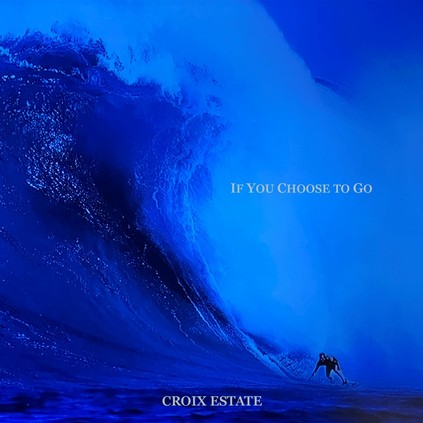 Two people would die sleeping on the beach where we had camped just six weeks prior. It was a cold, isolated, rocky cove at the edge of a dark wood at the tip of the North Pacific Coast, where waves of epic proportions broke in successive, eighteen second intervals. These were large, heavy, black-water beasts isolated from human interference. Not one soul in the water for miles in view. Glorious set, upon glorious set, inviting us to test our mettle. This is a dangerous territory for light-framed humans in black wetsuits: seal-pup-sized and the perfect outline of a light snack for an eighteen-foot Great White.
Two people would die sleeping on the beach where we had camped just six weeks prior. It was a cold, isolated, rocky cove at the edge of a dark wood at the tip of the North Pacific Coast, where waves of epic proportions broke in successive, eighteen second intervals. These were large, heavy, black-water beasts isolated from human interference. Not one soul in the water for miles in view. Glorious set, upon glorious set, inviting us to test our mettle. This is a dangerous territory for light-framed humans in black wetsuits: seal-pup-sized and the perfect outline of a light snack for an eighteen-foot Great White.
With the smell of sweet Cypress peat and driftwood smoke sousing the air, a heavy emotion took hold, and we shared our thoughts on stepping into the void, “It’s a gorgeous rendering from god’s mind when you think about it,” quipped a young man wanting to sound grounded and present, as fear dripped down the inner leg of his wetsuit. This was his first time surfing here. “Like I said, this is heavy water, mate. Never turn your back to the ocean. Ever. Choose to live here for a while and paddle out alone, then you will come to know what I know. God won’t save you here. So, buckle up.” As only a friend of many years could reply.
Something primal happens to the soul who settles here. You see, to pack in your gear, food for three nights, a guitar, and a 12-gauge shotgun for protection builds character. You are free in spirit yet gripped by the prospect of the unknown. You fall, break a leash, wash out in a rip, and you are suddenly lost at sea. No matter how loud you scream. No matter how much you plead by a miracle you be saved. No one will come. This is a waypoint in a surfer’s life. You place your existence in the hands of fate and release the fear of consequence.
This is one canvas from which we paint our lives in the wine industry. Informative experiences that drive our instinct to push boundaries. We are nothing if not adventurous in spirit, wild at heart, and full of soul. We believe everyone has a waypoint in life – maybe more than one – where they can toggle and re-find inspiration to drive themselves further down the line in their vision quest for their lives. But…let’s be honest, far too many of us often give up. Maybe the day is too windy, too cold, and the surf…just too big. So, let us leave you with this one last story.
Four of us once hauled out on a mid-winter surf session so bloody cold and big we often refer to the session as “foot pads.” That is all that needs to be said. Foot pads. Blue lips, bone-white hands, ear lobes as fragile as ice chards, a broken surfboard, and feet so cold they felt like walking on twelve-inch ice blocks once you hit the rocky shore. One dude reveled in the high of the moment, shivering – “I was recalling the high points of our session,” – while the rest of us crawled out of our icy suits, dripping in hypothermia. Four shots of tequila, a case of beer, and a hot fire later, sure, we could laugh about it. It still brings chuckles around the table. What on earth were we thinking? Truth is, we were not thinking at all. We were just doing. Throwing ourselves into the wave of our life in that moment. Suffering. Laughing at the suffering. Savoring life.
Friends, you may be in for the ride of a lifetime or a wipeout from which you may struggle to recover. How will you ever know unless you choose to go? We are very grateful we chose to throw ourselves into this wave called Croix Estate. What a wild ride it has been so far! And, we are thrilled you are choosing to come along for the adventure.
The two wines featured in our final allocation of the year are appropriate for the moment. One launched our beginning into Pinot Noir and one that we are saying farewell to, as the last vintage produced is upon us. Both are very limited in production. So, get in here and throw yourselves over this awesome wave. You will not regret the ride.
Acquire Your Allocation Here
2021 South Block Six Pinot Noir | Platt Estate Vineyard, Sonoma Coast
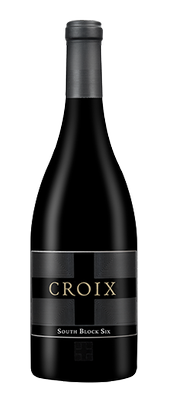 Variety: 100% Pinot Noir, Clone 667 | Method | 100% Pellenc Destemmed, 5 Day Cold Soak, 100% Carbonic Native Inoculation Open Top Fermentation, Hand Punch Down Cap Submersion, Free-Run Transfer Via Gravity Flow| Aging Regimen, 40% New French Oak, 16 Months | Clarifying Via Barrel To Tank | 5 Barrels Produced
Variety: 100% Pinot Noir, Clone 667 | Method | 100% Pellenc Destemmed, 5 Day Cold Soak, 100% Carbonic Native Inoculation Open Top Fermentation, Hand Punch Down Cap Submersion, Free-Run Transfer Via Gravity Flow| Aging Regimen, 40% New French Oak, 16 Months | Clarifying Via Barrel To Tank | 5 Barrels Produced
This will be the final vintage produced. 6 vintages into our run with this epic vineyard, the French Insurance money people have gobbled up yet another privately owned, elite vineyard on the Sonoma Coast. Epic sums of cash were laid out for this vineyard and no vineyard contracts were awarded beyond vintage 2021. Appropriate to the gist of our opening letter, we pushed into the Platt Vineyard wave early with the 2016 vintage and never looked back. Some of the most expensive fruit in Sonoma County as it relates to Pinot Noir by the acre, this elite, gem of a vineyard will be missed. Needless to say, the 2021 vintage follows true to form as with all previous vintages, knocking it out of the park and then some. If ever there were a “Grand Cru” classification system within Sonoma County, this would sit squarely in place. We will attempt to spread the love to as many recipients as we can with this wine, however, first priority will be given to those allocation recipients who have purchased this wine in the past. Do not miss your allotment of this wine.
Located in the western-most hills of Sebastopol, near Freestone, sitting at elevations that range from 400 feet to 800 feet, and situated just 5 miles from the Pacific coastline, the vineyard is planted to a mélange of Pinot Noir clones. At 31 acres, our vineyard parcel is located in the southwestern facing Block 6. While ridiculously close to the coastline, this vineyard is deceivingly warm. Taking the drive from the cold (62 degrees) fog soaked Bodega Highway, one courses the vineyard’s twisting road up the ridgeline and into the summer sun, where daytime temperatures range from the low 70’s to the mid 80’s. This is a spectacular juxtaposition of climate at elevation and serves as the foundation for producing some of Sonoma County’s finest, and most expensive Pinot Noir, with an average per ton cost of $11,000-$15,000 in most vintages. And, we think you will discover, it is so worth it!
Opulent, red and blue fruit come together on this wine on the nose. Goodness, this is going to be delicious. Cranberry, blueberry , crushed cinnamon, and plum draw you into the glass. A dark, purple hew hints at pedigree in the glass. Red fruits, black plums, and blueberry are framed with supple tannins, minerality, leather, sweet tobacco, and allspice leading to a balanced viscosity and weight on the palate. There is substantial glide in the finish that is long and delicious. Please sir! May I have another?
$125 | 5 Barrels Produced
2021 Ol' Manzana Pinot Noir | Dutton-Manzana Vineyard, Green Valley of the Russian River Valley
 Variety: 100% Pinot Noir, Clone 777 and 828 | Method | 90% Pellenc Destemmed, 10% Wholecluster, 6 Day Cold Soak, 100% Carbonic Native Inoculation Open Top Fermentation, Hand Punch Down Cap Submersion, Free-Run Transfer Via Gravity Flow| Aging Regimen, 50% New French Oak, 16 Months | Clarifying Via Barrel To Tank | 6 Barrels Produced
Variety: 100% Pinot Noir, Clone 777 and 828 | Method | 90% Pellenc Destemmed, 10% Wholecluster, 6 Day Cold Soak, 100% Carbonic Native Inoculation Open Top Fermentation, Hand Punch Down Cap Submersion, Free-Run Transfer Via Gravity Flow| Aging Regimen, 50% New French Oak, 16 Months | Clarifying Via Barrel To Tank | 6 Barrels Produced
Just when you thought this vineyard could not get any better, along comes the 2021 vintage. Clones 777 and 828 are ideal for this location just outside of Graton, a stopover town on the way to Sebastopol. We started this program with the first vintage of 2012 at just 50 cases produced. If there is one thing that we have learned from farming and producing from this vineyard over the last ten years, it is that this Pinot Noir is built to last. There is nothing in the wine world quite like an aged Pinot Noir that packs in the flavor and zest to keep you coming back for more. What sets this wine apart is its location within the Green Valley sub-appellation within the broader Russian River Valley AVA. Warm days followed by chilly nights that sweep in from the Bodega Headlands up through the Russian River and sit square over the area. Add to it Goldridge dust—that special soil only this area produces—and a southeastern facing aspect, and boom! You have the ingredients to create deliciousness in the glass.
Located in the Green Valley sub-appellation of the Russian River Valley, just across Purrington Creek outside of the town of Graton, the Manzana Vineyard is planted on a gently sloped hillside composed of Goldridge soils. The name “Manzana,” Spanish for apple, honors the area’s long heritage of apple orchards. Manzana’s hillside vineyard is eastern facing, which is optimal for ripening Pinot Noir in cooler growing regions. Planted to clone Dijon 828 and Dijon 115 in 2001, this vineyard sits on a sloped foundation of Goldridge soil with ideal drainage into Purrington Creek. The vineyard is a certified Sonoma County Sustainably-Farmed and Fish-Friendly vineyard. The site produces moderately sized vines with small clusters. Cool growing conditions due to the morning fog allow the Pinot Noir to ripen slowly, developing tannic acids overtime that lead to pure balance in the fruit base. Of all of the Pinot Noirs we produce, Manzana has proven to be the Pinot Noir that will stand the test of time. Our first vintage produced from the vineyard was 2012 and has been nothing but impressive ever since. To this day, the 2012 vintage continues to be fresh, full, and alive with very little oxidation in color or body, a testament to the pedigree of the site.
Highly perfumed black cherry, cherry cola, cranberry and big red apple drive the aromatics, while the soft, floral nuances really get you interested in what comes next. Opening with strawberry compote, floral (Hibiscus), allspice, graphite, with subtle hints of dried cocoa and juniper. My goodness, this is gorgeous! Tons of red fruit, silky currants with sexy, integrated tannins. Viscosity is balanced by consistent acidity that runs through the whole palate. An ultra-long finish that coats the mouth finishing with spice and ripe, red fruit. A well-balanced approach with a very full finish. Delicious!
$95 | 6 Barrels Produced
Acquire Your Allocation Here
AUTUMN 2023 | Vestiges of Belief | A Full Serving Of Lip Smacking Deliciousness
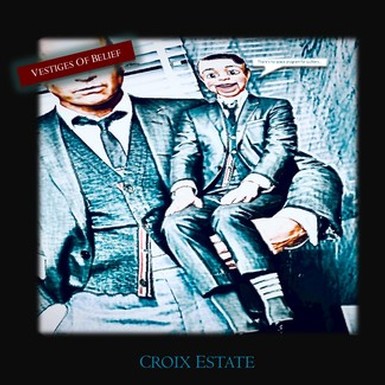 The Money Men were on site looking dreadfully serious for the occasion. One would have taken them for archly nerdy Don Draper suit-types who veer towards Thom Browne’s uniform ideals of shrunken grey suits with their high-cuff cuts were it not for the shoes and the $50,000 watches that disclosed their profession. Honestly, there is something deceivingly disarming about an unmatching, full-length sock when styled under the ankle grazers. It makes for a bit of whimsy amidst a serious brow. Like a high school band-nerd who’s earned serious, disposable financial resources who is now fortified with the attitude and protection that only wealth can secure, yet hasn’t strayed from his high-water, wedgie attracting roots. No one would dare wedgie these guys now. These dudes had the sand to back their swagger.
The Money Men were on site looking dreadfully serious for the occasion. One would have taken them for archly nerdy Don Draper suit-types who veer towards Thom Browne’s uniform ideals of shrunken grey suits with their high-cuff cuts were it not for the shoes and the $50,000 watches that disclosed their profession. Honestly, there is something deceivingly disarming about an unmatching, full-length sock when styled under the ankle grazers. It makes for a bit of whimsy amidst a serious brow. Like a high school band-nerd who’s earned serious, disposable financial resources who is now fortified with the attitude and protection that only wealth can secure, yet hasn’t strayed from his high-water, wedgie attracting roots. No one would dare wedgie these guys now. These dudes had the sand to back their swagger.
The power they now held over our fait de accompli, driven by our belief’s exceptional-glory premise, was palpable. These were four, power-primed executives from First Republic Bank (yes, that bank), who, upon arrival toed delicately around a mud-pocked, gravelly parking lot. Their brushed leather laced Oxfords were scuffed to ruin before the first word of our financial pitch was ever uttered.
To be honest, the winery we purchased before it became Croix Estate (the winery you know today), was in rough shape, yet it was filled with deep, personal love. It was evident – to us – that the bones of the place had been cared for and labored over – by hand – for well over a century. A classic, all-American wine production story that we now owned. Belief had led us here. And belief would take us to experiences, good and bad, as we leaned into manifest our destiny.
When we first ripped this winery apart – took it squarely down to the studs – we believed that this was the path to stating our brand, rebuilding it in our fantastic image for Croix Estate. Our demolition experience was both good and bad. Bad, because we knuckle-headed our initial building progress with the assumption that our construction was done up to county code. Good, because the big, fat, red-tag closure of the property caused us to pause our belief system for a great number of months.
The closure of construction forced us to slow down, feel the place, the history, and to find the balance within our agronomic surroundings. It allowed us to get comfortable in our new skin, to become friends with our neighbors, and develop a new set of beliefs. What became of that initial misstep was a more holistic understanding and respect for the entirety of our place within our community.
Frankly, the experience made us better people, because, prior to this development, we faced our vision in eccentric veneers of belief – some quite uncomfortable to reflect upon even now.
For example, we recall a plan to rip and replant the old-vine Zinfandel (planted in 1904) from the ground of the estate and plant it to Pinot Noir before being saved by a miracle-ripple in our destiny. (Oh, the shame of such thoughts!) We also recall elaborate wood boxes; shiny tissue-wrap paper; espresso-stained barrels; gold plated wine openers; soft, angelic acoustic guitar played over Sonos during our tastings; and unnatural brand language written in the third person that made us sound like pompous jack holes. We recall believing we would become the new cult winery – whatever the hell that means – never having to do any work to spread our gospel according to Croix Estate because we would arrive and simply be GREAT! After all, there was no space program for quitters!
And, we remember pitching our plan before the principles of First Republic Bank, painting grand visions for a luxury brand dedicated to Chardonnay and Pinot Noir production. Big dreams, big bottles, big wines, big epiphanies. At the end of our big presentation, the bankers had just one question – just one: “How much lipstick are you going to have to put on this pig?”
Kind of makes you shudder, doesn’t it? It does us, even to this day.
You see, beliefs must adapt, evolve, and stand on a solid foundation of humility and gratitude because we rise, we fall, we fly, we crash, we bend, and sometimes, we break.
Bringing this Croix Estate thing into reality, holding it together, pushing through rough stuff requires more than just our beliefs. It requires that you, our core enthusiasts, believe in our work, because if we are not adapting in pursuit of our vocation with integrity…well, then...this great, big adventure is just a pretty pig and another vestige of belief.
+Speaking of pigs…and cows! Better hang on to your swim skivvies because you are about to jump into the deep end of a wonderful pool filled with a full serving of lip-smacking deliciousness. The two wines featured in our Autumn allocation are stunning renditions you will not want to miss. One named after the California wild boar, and one born from a 300-acre dairy farming family turned exceptional winegrower. With gratitude and joy for sticking with us. We sincerely appreciate everything you do to make our dreams come true.
Acquire Your Allocation Here
2021 West Pyramid Pinot Noir | Bucher Estate Vineyard, Middle Reach, Russian River Valley
 Variety: 100% Pinot Noir, Pommard Clone | Method | 80% Pellenc Destemmed, 20% Wholecluster, 5 Day Cold Soak, 100% Carbonic Native Inoculation Open Top Fermentation, Hand Punch Down Cap Submersion, Free-Run Transfer Via Gravity Flow| Aging Regimen, 50% New French Oak, 16 Months | Clarifying Via Barrel To Tank | 10 Barrels Produced
Variety: 100% Pinot Noir, Pommard Clone | Method | 80% Pellenc Destemmed, 20% Wholecluster, 5 Day Cold Soak, 100% Carbonic Native Inoculation Open Top Fermentation, Hand Punch Down Cap Submersion, Free-Run Transfer Via Gravity Flow| Aging Regimen, 50% New French Oak, 16 Months | Clarifying Via Barrel To Tank | 10 Barrels Produced
The Bucher family operation is an all-American, immigrants make good on a dream through self-determination story. Joe and Annemarie immigrated from Luzern, Switzerland in 1950, settling first in San Jose with a dream of owning a dairy farm in Northern California. Born in 1929, Joe came from a family of dairy farmers in the tiny town of Inwil. With dairy farming in his blood, Joe was determined to establish his own operation to continue the family legacy in the United States. By 1958 Joe and Annemarie had located a 360-acre dairy for sale just outside the town of Healdsburg. The two invested their life savings on the purchase and began their journey with just 50 head of dairy cows and a few calves, making the decision to produce organic milk from cows raised on a strict diet of organic alfalfa and hay. This would set the bar high for parceling land from which to farm grapes. Their son John graduated from UC Davis in 1984 and returned to Healdsburg to manage the dairy operation. John recognized an opportunity to diversify their land with a high value crop in vitis vinifera, in particular, Pinot Noir and Chardonnay. Convincing his parents of the decision to branch into the winegowing business, the first vineyard blocks of Pinot Noir were planted in 1997.
Located adjacent to Bucher Farms on Westside Road, in the heart of the Middle Reach of the Russian River Valley AVA, Buchar Vineyards consists of 38 sustainably farmed acres, two of which are planted to Chardonnay. The 36 acres of Pinot Noir are broken into 14 distinct blocks, utilizing 10 distinct clones: Opa’s (943, Mariafeld, Calera), Rock Ridge (Pommard), Saddle (Swan), West Pyramid (Pommard), North Pyramid (Pommard), Pear Tree (Dijon 667), South Hill (Dijon 115, Mt. Eden), Frost Hill West (Mt. Eden), Frost Hill East (Mt. Eden), North L (Dijon 777), Torry’s (Pommard), Raspbery (Pommard), House (Dijon 115), and South L (777).
An exotic, perfumed, yet masculine aromatic mix of honeysuckle, charred meats, bacon fat, orange rinds, and Morell mushrooms leads the way to light herbal scents of earl grey tea, lavender, sweet stone fruits and a dash of cayenne pepper. Wow, this wine grips your attention. Big, luscious dark fruit with forward tannins leads into fleshy plum, crushed red delicious apple, cherry syrup, subtle notes of fresh straw complimented by structured acidity and an exceptionally long finish. Simply stunning!
$68 | 10 Barrels Produced
2021 La Cinghiale GSM Red Blend | Kick Ranch Vineyard, Fountain Grove, Sonoma County
 Variety: 59% Syrah, 23% Grenache, 18% Mourvedre | Method | Open Top Fermentation, 11-Day Cold Soak, 100% Carbonic Maceration With Hand Punch-Downs, Free-Run Transfer Via Gravity Flow To French Oak, Utilizing 100% Native Yeast Primary and Secondary Fermentations. Aging Regimen | 60% New French Oak, 18 Months | 10 Barrels Produced
Variety: 59% Syrah, 23% Grenache, 18% Mourvedre | Method | Open Top Fermentation, 11-Day Cold Soak, 100% Carbonic Maceration With Hand Punch-Downs, Free-Run Transfer Via Gravity Flow To French Oak, Utilizing 100% Native Yeast Primary and Secondary Fermentations. Aging Regimen | 60% New French Oak, 18 Months | 10 Barrels Produced
Small lot Grenache, Syrah, Mourvedre and the blended GSM captured our hearts decades ago coming up in the industry. Grown to perfection and in the right locations, there was magic in the bottle of these off-variety productions that offered a range of styles from quaffable, aromatic beauties to hedonistic ink bombs that everyone seemed to pan at our wine parties, despite not a drop being spared in the bottles of the heartier efforts. It was, particularly during the late 1990’s, with Zinfandel and GSM productions that we witnessed a cultural shift in production from lower alcohol wines to more fruit forward, fully-ripened renditions. While we find great pleasure in debating the attributes of both style preferences, there is an argument to be established in any Northern California, wine-country tasting room that California began to define itself outside of traditional French-based winemaking practices during this period, and much to the flavorful benefit of the consuming public. That’s where we come in with our version of GSM. Croix Estate enthusiasts have come to recognize that we are not shy about growing fruit to its optimal ripeness. However, where there is ripeness, there is balance and harmony, and our Croix Estate 2021 La Cinghiale GSM Red Blend is no exception on both fronts.
To the Northwest of Cazadero Station lies a hidden foot trail that leads backcountry hikers on what is perhaps the most breathtaking, yet dangerous, treks out to the Annapolis ridgeline overlooking the coast at Stuart’s Point. Experienced hunters say the wild boar is more dangerous to hunt than most animals. Weighing in at 600+ pounds at full maturity, the males are territorial of all intruders and the females violently protective of their young. To the casual hiker, approaching the Kings Ridge section of the hike requires a soft shoe and keen hearing, lest you encounter the ferocity of these feral beasts. The boar was not indigenous to California, yet it has managed to survive and thrive untamed in the densely wooded, northern regions of the state. A testament to the strength and character of the species.
Ripe, blackberry and rhubarb pie notes cascade into zesty, crushed pomegranate curd, toasted oak char, white smoke, black pepper, dense red berry fruit and Cape jasmine waft from the glass drawing one’s curiosity. And that is just on the nose! The palate is rich and spectacular, revealing flavors of ripe black plum, blackberry, sweet cassis, with hints of black pepper, espresso and semi-sweet cocoa. The finish is lengthy and viscous with vibrant acidity adding substantial length to the session. Do not miss this wine
$60 | 10 Barrels Produced
Acquire Your Allocation Here
SPRING 2023 | Puncture The Rhythm Of Life | Our Third-Annual Bread & Butter Allocation
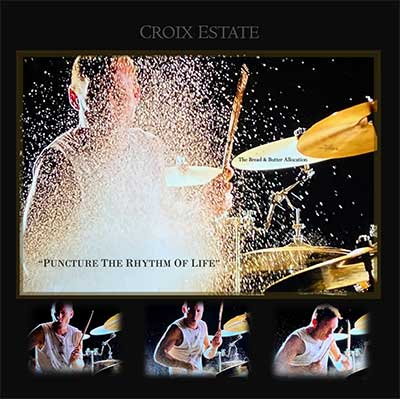 If I were you, I would better watch out! For what’s to come will rupture your daily rhythm.
If I were you, I would better watch out! For what’s to come will rupture your daily rhythm.
Know this, friends, we just cannot stop loving brilliant, talent-laden, overproducing human beings. They are rare, gifted crutch-sticks and inspirational trap-boxes that convince us to believe that we can too!
If you have ever had the pleasure of witnessing Jane’s Addiction live in concert (on your preferred, spiritual enhancing stimulant of choice, of course) overtime, one comes to appreciate the beat-Jedi found at the back of the stage that is Stephen Andrew Perkins. A master wizard in the utilization of the drum kit as an existential voice in the rock-band chorus. Man, his moxy is a powerful tempo that punctures the rhythm of life.
Now listen, you Jazz/Latin/Reggae nerds, don’t get all caught up in technical superiority arguments against rock drums within the instrumental genre. We know your opinions and respect them. Just do us a favor you beautiful sophists: take off that Canali coat and tie, kick off those gorgeous Bottega Veneta’s, roll your home-grown spliff, and grab a killer glass of Croix Pinot Noir, and hear us out.
Let’s strip this down to a pocket kit here. A beat is just a beat without its mathematical cadence. On its own, the snare is just a crack, a crack, a crack. On its own, a 10” hanging rack tom is just a bong, a bong, a bong. On its own, a 14” floor tom is just a boom, a boom, a boom. On its own, a bass drum is just a thump, a thump, a thump. But when you start mixing things together, the rendering becomes reality: Crack(d)crack-thu-thump-thump. (d)bonga(d)bonga(d)boom-thu-thump-thump. Crack(d)crack(d)crack-thu-thump-thump. (d)bonga-thu-thump(d)bonga(d)boom-thu-thump-thump. Crack(d)crack-thu-thump-thump. (d)booma(d)crack(d)booma-thump-thump. (d)booma(d)crack-(d)bonga-thu-thump-thump. (d)bonga(d)bonga(d)boom-thu-thump-thump. Feel that? If not, take another drink of that Pinot and know this: you just punctured the rhythm of thought. Seriously. You just stopped and worked that beat. In your head. If you are on your second bottle of Pinot, you may have heard it audibly. Maybe you felt it. Real drummers don’t get technical. Let it flow, please.
Now let’s come down the mountain and step into the point of this rhythm thing. The act of picking up a stick and racking it against anything available that makes sound is to puncture the momentum of mediocrity for this simple reason: in that moment, a choice is made to stand up, grab a tool, and strike an instrument, to puncture the static rhythm of life as it occurs day-in and day-out. Just imagine how liberating it felt to Stephen Perkins when that light went on. Hell, listen to the guy speak about his love for his art, and you know that guy is locked in. Standing in rare air and breathing it all in. A master of his craft. What a beautiful reflection.
Precisely five years ago, we opened our winery doors to visitation after six years of pushing our craft story the hard, lonesome way – one wholesale account at a time. Simply opening the doors to our new winery home was our taking our stick and racking it against an object. Over time we came to realize, we needed to make more wine. (crack(d)crack-thu-thump-thump) We not only needed to make more wine, we needed to make wine for the everyday table. (crack-thu-thump(d)crack-thu-thump-thump) We not only needed to make wine for the table, we needed to make it freakin’ crazy delicious awesome! ((d)booma(d)crack(d)crack(d)thu-thump-thump) Finally, we not only needed to make awesome everyday wine, we needed to allocate all that wine annually and give that allocation a name: Bread & Butter. ((d)bonga(d)thump-(d)bonga(d)boom) That annual allocation event is now in its third year. (thump(d)crack(d)crack-crack-SPLASH) Drop the sticks.
Friends, this is our most anticipated allocation of the year and for so many good reasons. Chief among them is the composition of our kit-set of wines hailing from the 2021 and 2022 vintages. Our goal here is to provide you with guilt-free consumption – that feeling you get when you know you are opening something killer and you don’t think twice about what it cost. This is pure, pleasurable, perfection in your glass.
Acquire Your Allocation Here
2021 "1904 Estate" Zinfandel | Croix Estate Vineyard, Russian River Valley
 Varieties 90% Old-Vine, Estate Zinfandel, 10% Alicante Bouchet | Method: 100% Pellenc destemmed, 50% Stainless, 50% Open Top, 100% Native Primary & Secondary, 65% New American Oak, Unfiltered.
Varieties 90% Old-Vine, Estate Zinfandel, 10% Alicante Bouchet | Method: 100% Pellenc destemmed, 50% Stainless, 50% Open Top, 100% Native Primary & Secondary, 65% New American Oak, Unfiltered.
You have been calling and waiting, calling and waiting, and waiting some more, as the last vintage of our Estate Zinfandel sold out in record time. Well, guess what? If you don’t pick this up now, you may miss your chance to secure an allotment from the spectacular 2021 vintage. If you remember the 2017 vintage of this wine, lookout! The 2021 is humping some serious weight. We will step up and state that this is one of the best renditions we have produced from our estate vineyard. Hands down. Our Croix Estate Vineyard Zinfandel is a heritage vineyard site. Planted in 1904, the original vineyard comprised of 39 acres planted in sections to Zinfandel, Carignan, Alicante Bouchet, Petite Sirah, and Mataro. Today, the vineyard consists of 10 acres of 90% Zinfandel and 10% Alicante Bouchet. Are you a fan of ultra-ripe, jammy Zins with zesty acid and a serious amount of viscosity? This wine is for you. Stunning aromatics, this wine pulls you in with sweet black cherry, ripe boysenberry, blueberry jam and wafting blooms of honeysuckle. Jet black, glass-sheeting ink indicate that you better have a toothbrush and some whitener handy. A liquid silk mouthfeel is full of luscious harmony featuring star anise, lavender honey, black plum, blackberries, concentrated red currants and a ripe, savory finish. Goodness, this wine is delicious!
$50 | 16 Barrels Produced
2021 Floodgate Pinot Noir | The Middle Reach, Russian River Valley
 The Vineyards: 33% Starscape (Floodgate) Vineyard | 32% Ritchie Vineyard |21% Bucher Vineyard | 12% Bacigalupi Vineyard | 1% 5 Wells Vineyard | 1% Ruxton Vineyard |Pinot Noir Clones: Dijon 667, Dijon 777, 828, Pommard, Vosne-Romanee, & Wente | Method: 90% Pellenc destemmed, 10% Wholecluster, 5 Day Cold Soak, 100% Carbonic Native Inoculation, Hand Punch Down Cap Submersions, 45% New French Oak, 16 Months. Unfiltered.
The Vineyards: 33% Starscape (Floodgate) Vineyard | 32% Ritchie Vineyard |21% Bucher Vineyard | 12% Bacigalupi Vineyard | 1% 5 Wells Vineyard | 1% Ruxton Vineyard |Pinot Noir Clones: Dijon 667, Dijon 777, 828, Pommard, Vosne-Romanee, & Wente | Method: 90% Pellenc destemmed, 10% Wholecluster, 5 Day Cold Soak, 100% Carbonic Native Inoculation, Hand Punch Down Cap Submersions, 45% New French Oak, 16 Months. Unfiltered.
IT’S BACK! How can you walk away from a wine that lifts everyone’s spirits? You don’t! What you do is you go back to the drawing board and you make it substantially better. That is precisely what we have done with the 2021 vintage of Floodgate Pinot Noir. Fans of ripe, full-bodied styles will absolutely love what this wine has to offer. Spicy aromas of cinnamon, cardamom, and anise mingle with dark cherry perfume, cola, sweet smoked tobacco leaf, and toasted vanillin. Rich and viscous on the palate, this wine has substantial glide featuring dark black cherry, savory caramel, black plum pie, supported with balanced acidity to lift the wine into a harmonious balance of rich and racy. Look for this delicious Pinot to put on more mid-palate weight over the next three years.
$68 | 17 Barrels Produced
2021 Narrow Gauge Chardonnay | Russian River Valley
 The Vineyards: Starscape Vineyard | Ritchie Vineyard | Dutton-Morelli Lane Vineyard | Richard Dinner Vineyard | Bacigalupi Vineyard | Chardonnay Clones: Old Wente, Dijon 76, Clone 4 | Method: Whole Cluster Press Into 50% Neutral, 50% New French Oak, 100% Native Primary & Secondary Fermentation, 9 Months Sur Lie, Rack & Return Aging Total 16 Months, Unfiltered.
The Vineyards: Starscape Vineyard | Ritchie Vineyard | Dutton-Morelli Lane Vineyard | Richard Dinner Vineyard | Bacigalupi Vineyard | Chardonnay Clones: Old Wente, Dijon 76, Clone 4 | Method: Whole Cluster Press Into 50% Neutral, 50% New French Oak, 100% Native Primary & Secondary Fermentation, 9 Months Sur Lie, Rack & Return Aging Total 16 Months, Unfiltered.
Please sir, may I have another! My goodness this wine absolutely over delivers. Another rockstar effort is coming to you and one that you do not want to miss. This is an everyday drinking gem that is stylish, perfectly balanced, and kissed by wine angels. A compilation of big-name vineyards tick-and-tie together like a finely woven blanket bringing quality up more than a few notches. This wine is full and expansive, yet bright and refreshing, producing a balanced, nuanced Chardonnay. Opening with a bouquet of raw honey, marmalade, fresh citrus zest, toasted pine nuts, rocky flints, allspice, toasted oak and lusciousness on the nose that is very inviting. Island ripe pineapple, Honeycrisp apples, stone fruit, and sweet pear leave the mouth watering in a cascade of pleasure. Take this wine to any spring or summer party and you will be an instant wine hero.
$50 | 15 Barrels Produced
2022 Fenceline Sauvignon Blanc | Croix Estate Vineyard, Russian River Valley
 Sauvignon Blanc Clones: 100% Sauvignon Musqué | Method: Wholecluster Direct Press Into Neutral French Oak, Native Primary & Secondary Fermentation, Unfiltered.
Sauvignon Blanc Clones: 100% Sauvignon Musqué | Method: Wholecluster Direct Press Into Neutral French Oak, Native Primary & Secondary Fermentation, Unfiltered.
A super-sexy, summer-sipping dream, our Estate SB is extremely limited in production with a cult following. As we always explain, just two rows exist on our estate, so delightful surprises in small batches continue to impress us from this sliver of vines. Enticing aromas of highly perfumed Amalfi lemons and citrus blossom mingle in with fresh wheat grass, white rose, honeysuckle and gardenia. On the palate, honey infused sweet pink grapefruit, base minerality, and Meyer lemon rind are delicately balanced with bright acidity, creamy nuances, and a touch of barrel vanillin, creating a wonderful textural experience. This wine is lovely, fun, and vibrant. Pack this in a bucket of ice next to the pool and bring a fresh blast of joy into your summer day!
$44 | 5 Barrels Produced
2022 Ruxton Sands Rose' | Ruxton Vineyard, Occidental Cordillera, West Sonoma Coast
 Variety: 100% Pinot Noir | Method: Wholecluster Direct Press Into Neutral French Oak, Native Primary & Secondary Fermentation, Unfiltered.
Variety: 100% Pinot Noir | Method: Wholecluster Direct Press Into Neutral French Oak, Native Primary & Secondary Fermentation, Unfiltered.
Just down the way from Morelli Lane Vineyard, off of Stoetz Lane, and not so far from Camp Meeker, lies the Ruxton Vineyard.Sitting at 800 feet of elevation in the heart of the Occidental Cordillera of the Russian River Valley appellation, we choose a direct pick and press method when producing our Rosé. Opening with a balanced temperament of verve and ripe fruit, set against a backdrop of light pink salmon color. Aromas of fresh strawberries, pressed sweet Meyer lemon, and hints of honeysuckle draw you in with curiosity. The palate is focused with refreshing and savory acid, raspberries and cola, with a finish that lasts for several minutes.
$33 | 10 Barrels Produced
Acquire Your Allocation Here
WINTER 2023 | Free Solo - Ultimate Freedom & Consequence | Single Vineyard Renditions Not To Miss
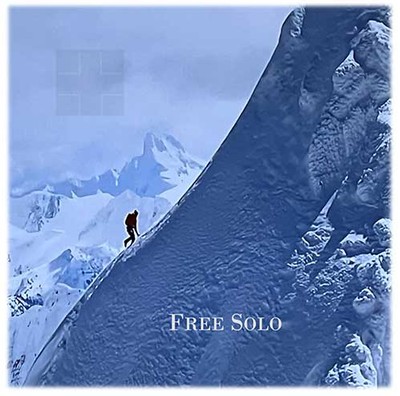 It was an untimely moment in the short life of a free spirit. An avalanche of powdered ice tore from the mountainside, burying all but the descending rope strand connecting alpinist to alpinist. An ironic passage given both climbers’ propensity to go it alone in the most demanding of alpinist pursuits. This would become a fateful and final position in the foothold of two lives at the cutting edge of their pursuit. To experience the soul at its most pure, undiluted existence is to know the meaning of desire. That thing that makes the pulse quicken. It steals your breath. Lightens your head. Gives pause to reflection upon the notion of having travelled through a quantum passage long before the existence of the moment.
It was an untimely moment in the short life of a free spirit. An avalanche of powdered ice tore from the mountainside, burying all but the descending rope strand connecting alpinist to alpinist. An ironic passage given both climbers’ propensity to go it alone in the most demanding of alpinist pursuits. This would become a fateful and final position in the foothold of two lives at the cutting edge of their pursuit. To experience the soul at its most pure, undiluted existence is to know the meaning of desire. That thing that makes the pulse quicken. It steals your breath. Lightens your head. Gives pause to reflection upon the notion of having travelled through a quantum passage long before the existence of the moment.
The purity of free solo is found in its isolation, where the focus becomes singular. One is performing a work in self-reliance as there is no rescue from mistake. It is the ultimate freedom and consequence. We can debate the ethics behind the confidence to put down a perfect solo climb. Perhaps such singular focus is at its base a narcissistic pursuit. How many times have visionaries been shunned by the uncomprehending as egocentric? To witness, film, or publicly log such individual pursuits—is this to promote reckless acts?
Be honest with yourselves, you who are among the over achievers. How many times have you ruminated upon the affliction of being driven to perfection? We can attest as winemakers to many hours given to intro-spection whereby we step back and ask, “Who the f*&% do we think we are?” If you ever have the opportunity to attend one of Deepak Chopra’s enlightenment retreats, we say lean into it. He often begins with a shared meditation whereby one is asked by the person sitting adjacent to them, “Who are you?” This goes on within the vulnerability crucible for what seems a lifetime. With each passing repetition upon the question, one becomes acutely aware the shallow veneer that belies a truth within us. Who we are.
You will often hear us speak of our work in the wine business as one of vocation. Becoming a viticulturalist, winemaker, business manager, a proselytizer of profession was never a question. We were just pulled into it.
To make wine is to work. To make wine a work of art is to experience the significance of hard work. It
requires a singular focus upon what you believe your destination in perfection to be. To call that thing forth from desire—now that is knowing oneself, as it is here one will not find rescue from mistake.
We don’t care how many times we hear, no thank you, I don’t like Chardonnay. Our response will always be, have you tasted our Chardonnay? You see, Chardonnay is essentially a flavorless grape.
Were it not for the minds of elite growers and talented winemakers, the variety could—arguably—barely be considered noble without purposeful intervention. And, it is here that we find connection of singular focus and the perils in pursuit of perfection. So powerful is our compulsion that we simply refuse to believe you would not want to engage in the celebration of our creation. Especially when it comes to Chardonnay.
Kind of egocentric when you think about it. Right?
Consequence be damned, it sure feels great to put down an example of our vision for perfection in the glass.
Acquire Your Allocation Here
2021 Richard Dinner Chardonnay | Richard Dinner Vineyard, Sonoma Mountain
 We weren’t crazy about the first vintage production of this wine. It seemed as though it fell out-of-boundary of scope as it related to our vision for producing West Sonoma Coast and Russian River Valley Chardonnay. But leave to the coastal gods to teach us a thing or to about the long arm of coastal influence deep into the reaches of Sonoma County. Sitting at a peak elevation of plus 2,000 feet, facing west to the pacific ocean, directionally speaking, this vineyard lies at the target point of a roundhouse kick to the face of narrow-minded denialism. Those familiar with the Petaluma Gap AVA know that late afternoon breezes can quickly turn to brisk fog-outs that blanket fast swaths of square mileage and Sonoma Mountain lies in its direct path. Few Sonoma County wine regions are so singularly defined by elevation, exposure, and geographical fea- tures as the Sonoma Mountain American Viticulture Area (AVA). The appellation covers the hills east of Sonoma Valley with the Richard Dinner Vineyard planted to Old Wente clone in 1986. Combine soil and micro-climate diurnal temperature variation, organic viticultural practices, a deft hand at coaxing the finer nuances in naturally produced Chardonnay, and you have the recipe for producing perfection in the glass.
We weren’t crazy about the first vintage production of this wine. It seemed as though it fell out-of-boundary of scope as it related to our vision for producing West Sonoma Coast and Russian River Valley Chardonnay. But leave to the coastal gods to teach us a thing or to about the long arm of coastal influence deep into the reaches of Sonoma County. Sitting at a peak elevation of plus 2,000 feet, facing west to the pacific ocean, directionally speaking, this vineyard lies at the target point of a roundhouse kick to the face of narrow-minded denialism. Those familiar with the Petaluma Gap AVA know that late afternoon breezes can quickly turn to brisk fog-outs that blanket fast swaths of square mileage and Sonoma Mountain lies in its direct path. Few Sonoma County wine regions are so singularly defined by elevation, exposure, and geographical fea- tures as the Sonoma Mountain American Viticulture Area (AVA). The appellation covers the hills east of Sonoma Valley with the Richard Dinner Vineyard planted to Old Wente clone in 1986. Combine soil and micro-climate diurnal temperature variation, organic viticultural practices, a deft hand at coaxing the finer nuances in naturally produced Chardonnay, and you have the recipe for producing perfection in the glass.
The 2021 vintage is a stunning, complex Chardonnay. Notes of tropical flower oil, sweet citrus, refreshing lemon zest, and toasted spices bring forth aromatic bliss. Rich and full-bodied, yet deftly balanced with cleansing acidity, caramel and rum cream that lead to a savory and delicious
balance of ripe pear, charred crème brûlée, and a bright, mouthwatering finish.
$75 | 6 Barrels Produced
2021 12 Rows Chardonnay | Ritchie Vineyard, Middle Reach, Russian River Valley
 Many consider this to be one of the greatest Chardonnay vineyards in the new world. Let that sit with you for a moment as you sip and savor the wine in your glass. We find it all too easy to become jaded with our proximity to greatness within our industry. Or, perhaps it is just that the growers we surround ourselves with are just regular, old farmers. Down-to-earth stewards enraptured by a vocation that compels them to work their land. Humility in the face of such admiration is so very refreshing and reminds us that our daily bread is earned, one vintage at a time. All other conditions are unnecessary noise. Let us distill it in this way: we are blessed to be a part of Kent Ritchie’s greatness.
Many consider this to be one of the greatest Chardonnay vineyards in the new world. Let that sit with you for a moment as you sip and savor the wine in your glass. We find it all too easy to become jaded with our proximity to greatness within our industry. Or, perhaps it is just that the growers we surround ourselves with are just regular, old farmers. Down-to-earth stewards enraptured by a vocation that compels them to work their land. Humility in the face of such admiration is so very refreshing and reminds us that our daily bread is earned, one vintage at a time. All other conditions are unnecessary noise. Let us distill it in this way: we are blessed to be a part of Kent Ritchie’s greatness.
There’s nothing like the smell of an ultraripe, white peach tree just before harvest and this Chardonnay emotes that memory, letting you know with one sniff that pure greatness is at hand. This wine opens with seductive notes of honeyed toast, vanilla crème brûlée and caramelized brown sugar causing the mouth to water with anticipation. The balance of creamy richness and racy delicacy showcases a deft hand in the making of this wine. Lemon curd, loads of white peaches and grapefruit are topped with whipped cream and crisp, honey-baked green apples. Pure perfection in the glass!
$75 | 7 Barrels Produced
2021 Starlings’ Roost Chardonnay | Dutton-Morelli Lane Vineyard, Green Valley, West Sonoma Coast
 2012 was the year that Croix manifest as a reality, as the first two barrels of Dutton-Morelli Lane Vineyard Chardonnay were put to rest in the cellar. We were enraptured by this site’s history, location, and the deafening cacophony emanating from thousands of roosting Starlings. Positioned within the Occidental Cordillera, this is home to hallowed earth, revered by many a talented winemaker. Planted in the late 1890’s, it is a temperate vineyard location sitting above the fog line, subject to piercing, midday sunshine, deceiving its proximity to the Pacific Ocean. In our quest to produce Chardonnay that will age for a decade or longer, our production of Starlings’ Roost Chardonnay has proven our postulations regarding lengthening the varietal lifespan.
2012 was the year that Croix manifest as a reality, as the first two barrels of Dutton-Morelli Lane Vineyard Chardonnay were put to rest in the cellar. We were enraptured by this site’s history, location, and the deafening cacophony emanating from thousands of roosting Starlings. Positioned within the Occidental Cordillera, this is home to hallowed earth, revered by many a talented winemaker. Planted in the late 1890’s, it is a temperate vineyard location sitting above the fog line, subject to piercing, midday sunshine, deceiving its proximity to the Pacific Ocean. In our quest to produce Chardonnay that will age for a decade or longer, our production of Starlings’ Roost Chardonnay has proven our postulations regarding lengthening the varietal lifespan.
Honeyed Earl Grey tea, Meyer lemon curd and scents of lightly toasted pine nuts bring us back to the founding vintage of this wine. Sweet pink grapefruit, ripe Gravenstein apples balance sweet and tart to perfection, leading to a round, lengthy finish of Hawaiian pineapple, cinnamon, cloves and a dash of toasty vanillin. Medium bodied, yet light on the palate without the cloying viscosity often found in Chardonnay. Another glass please!
$75 | 6 Barrels Produced
Acquire Your Allocation Here